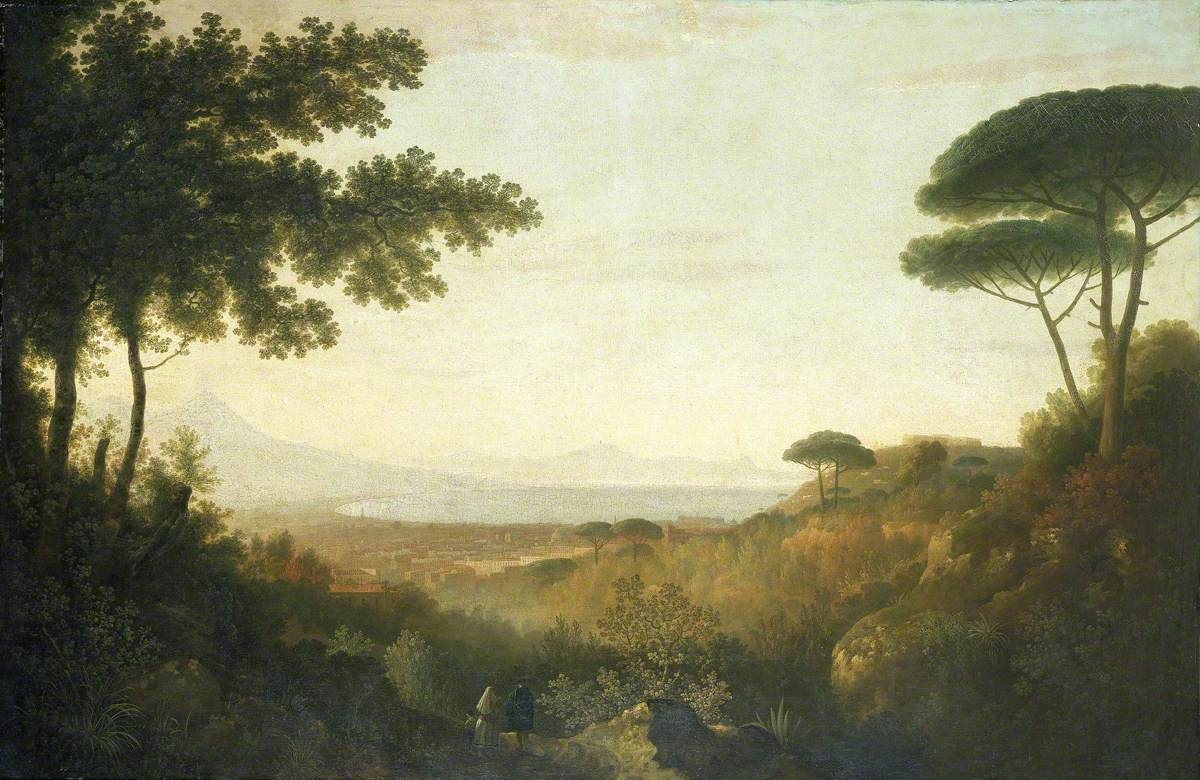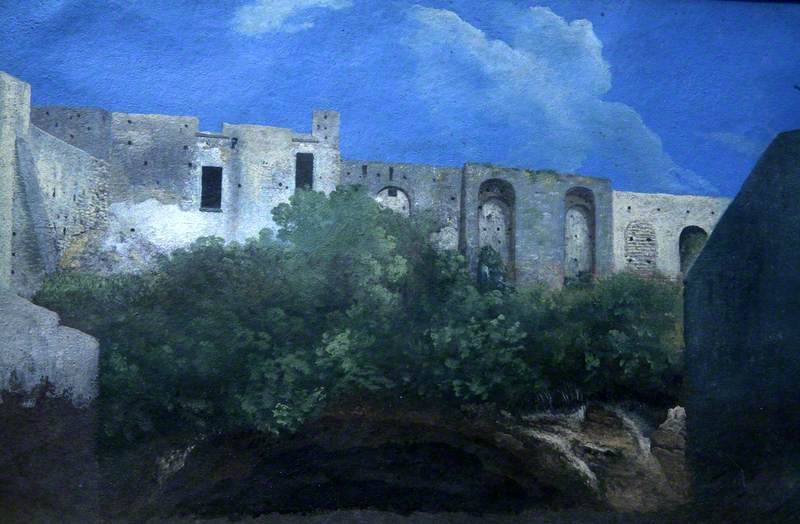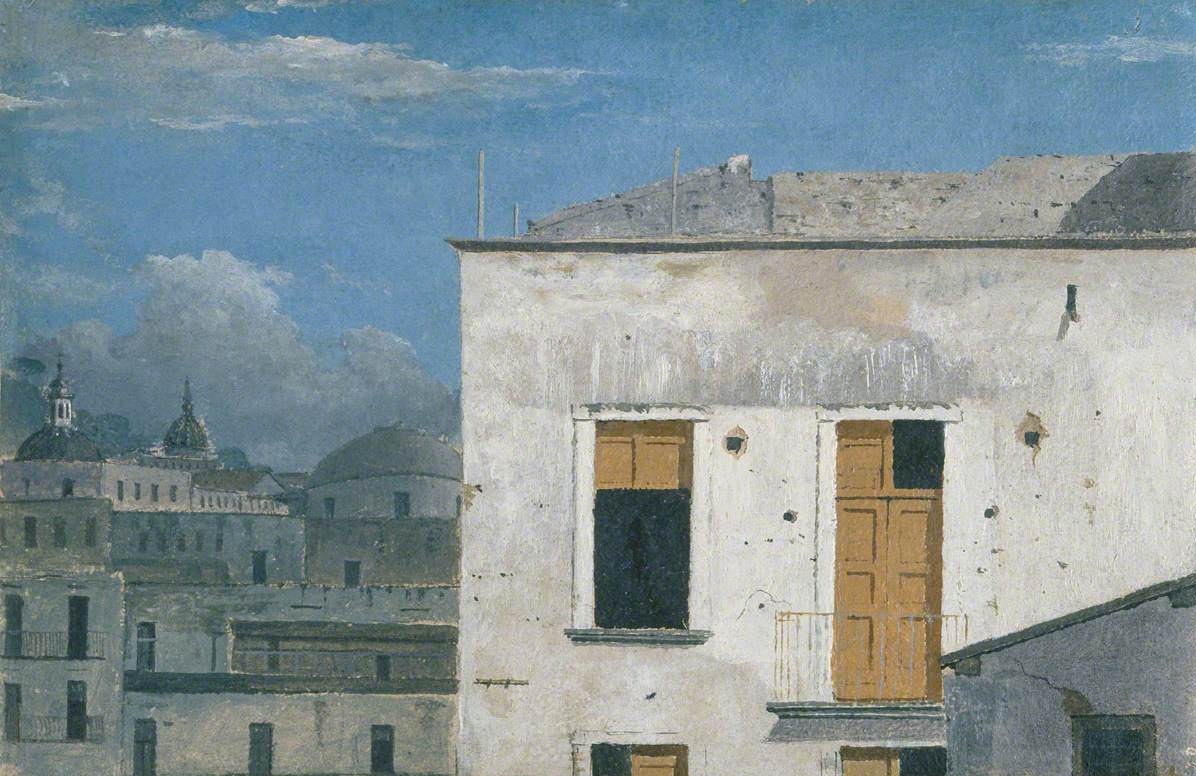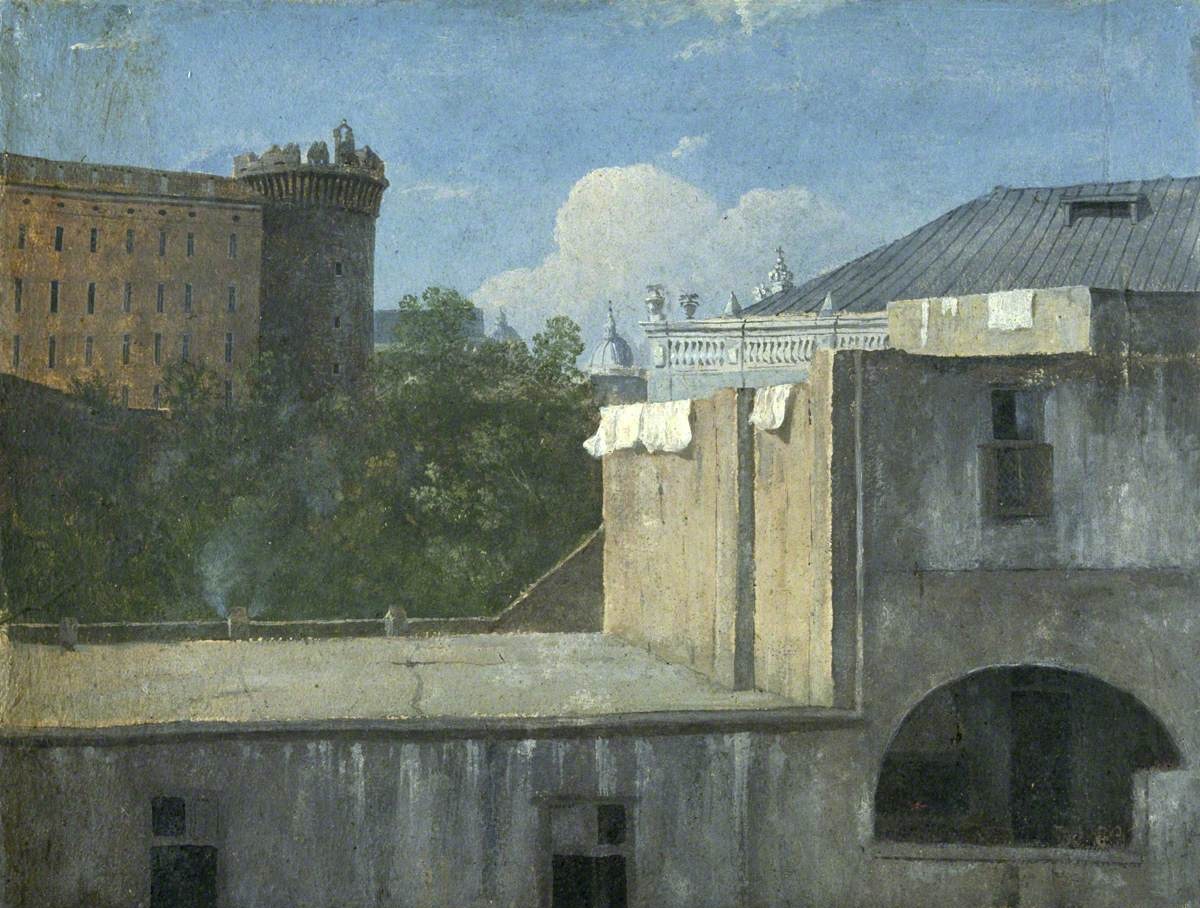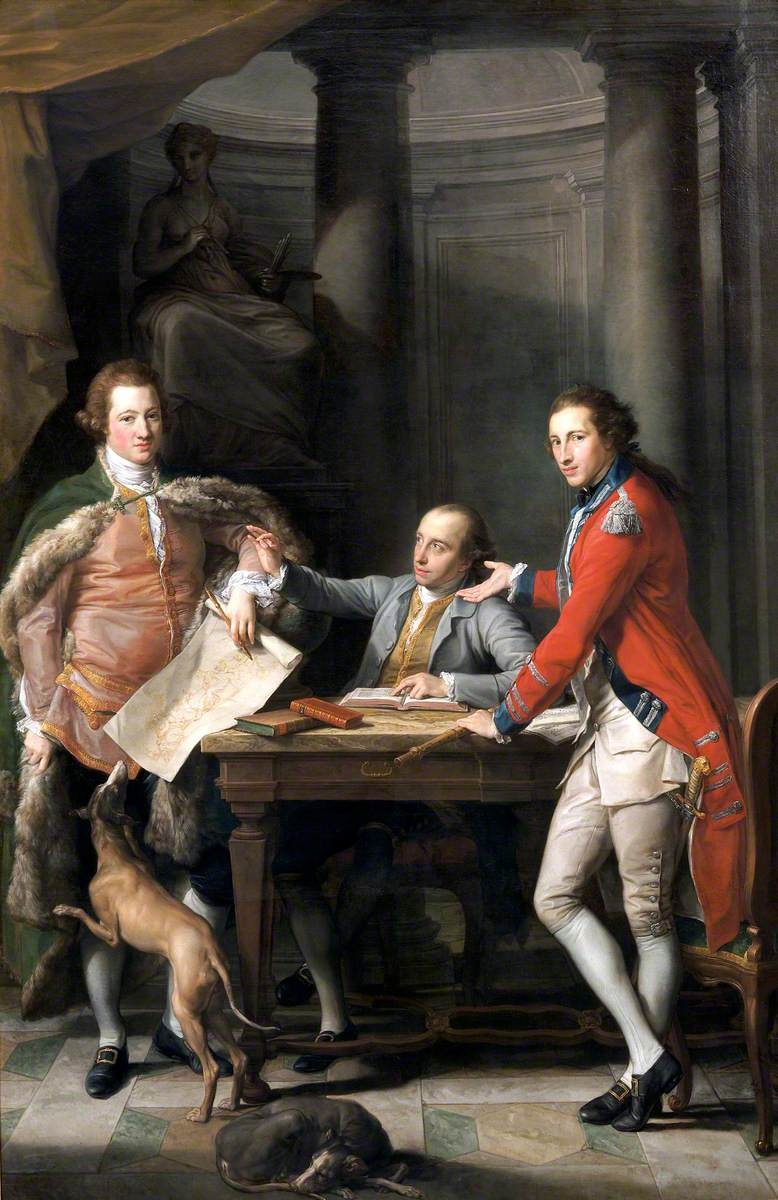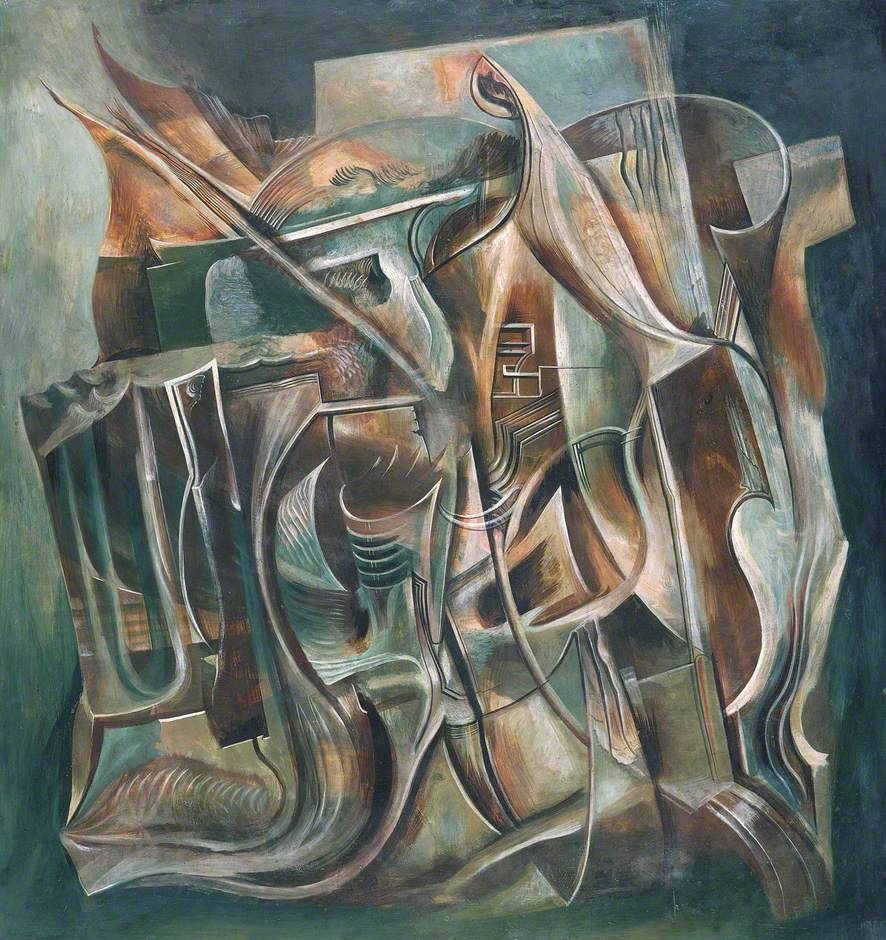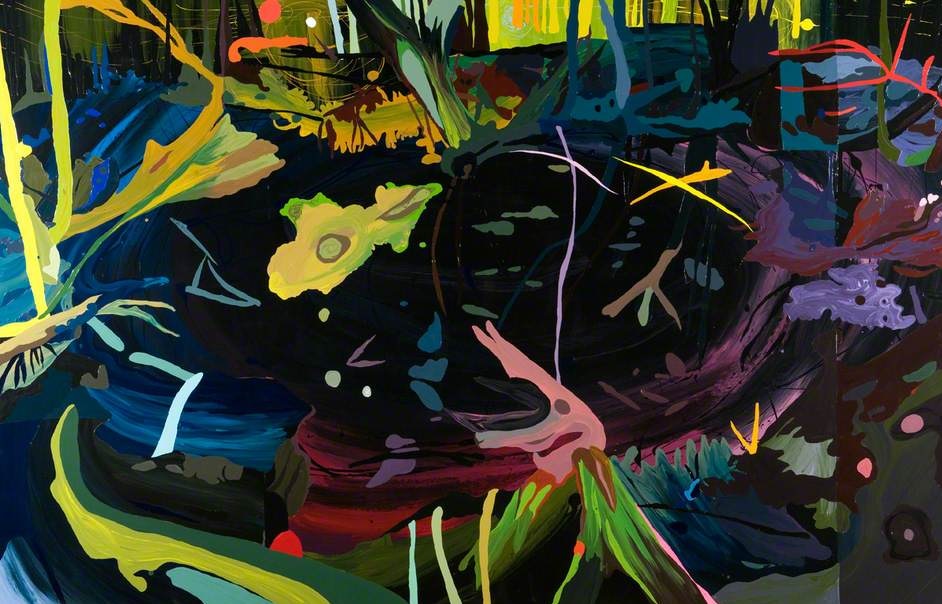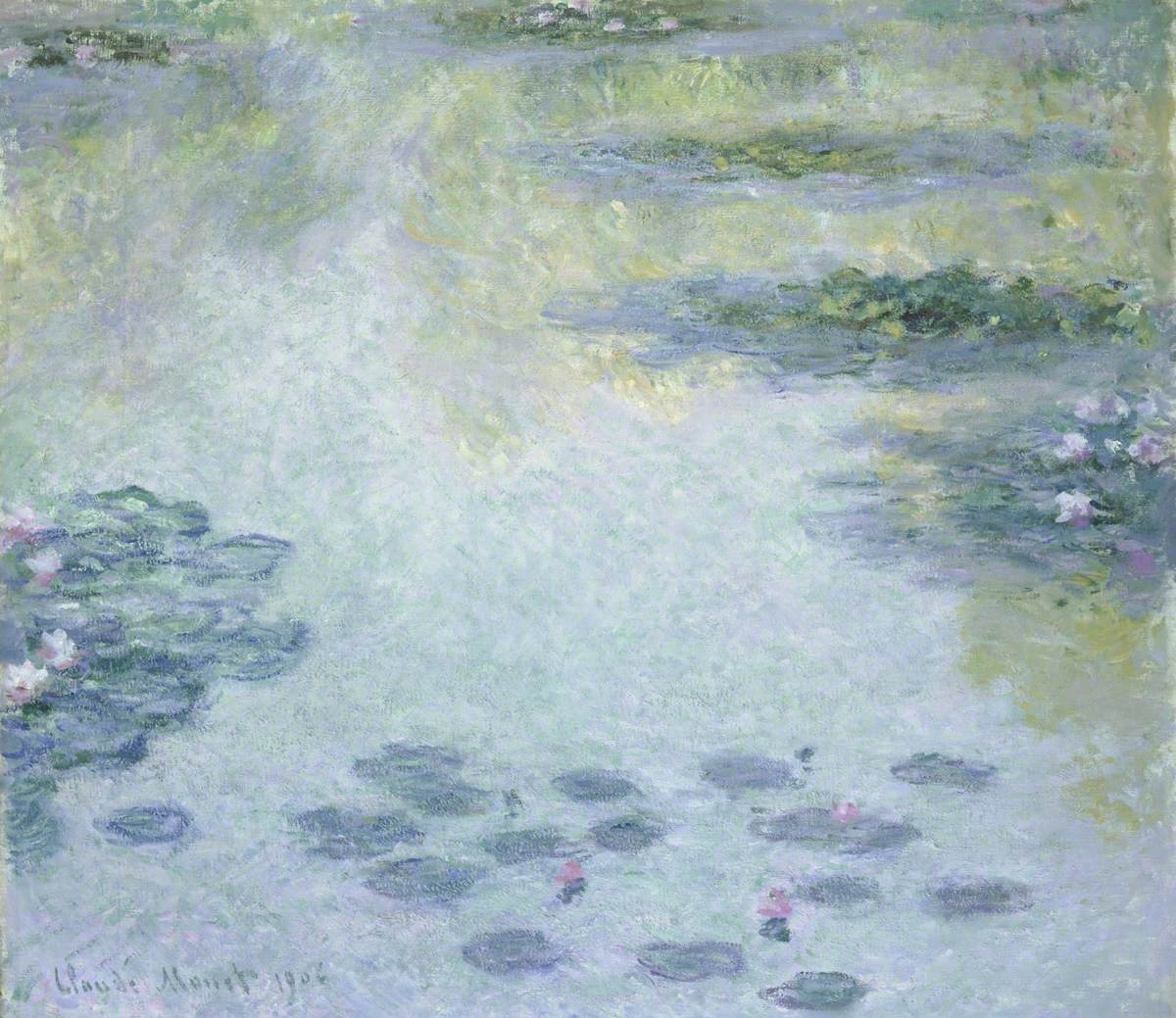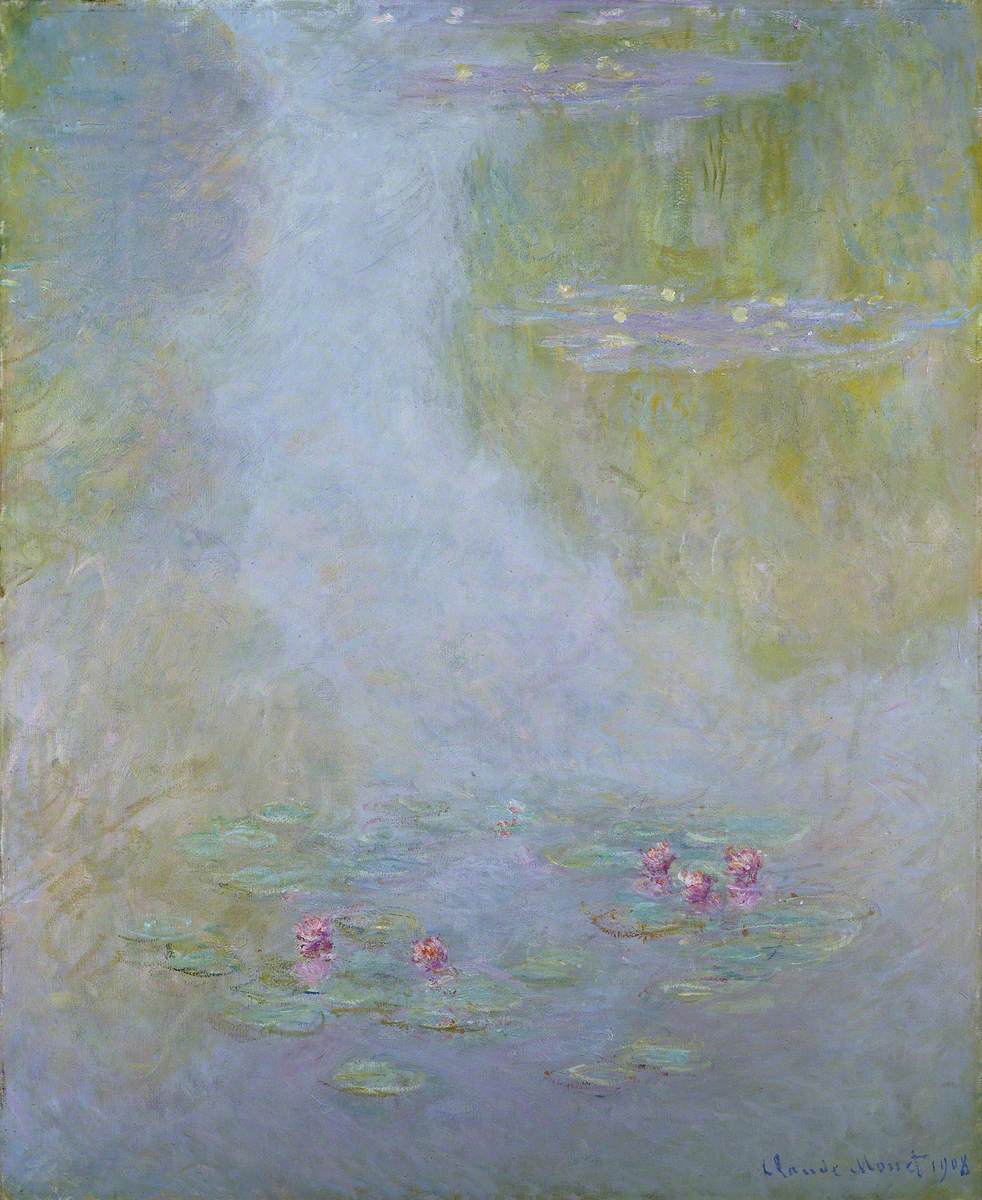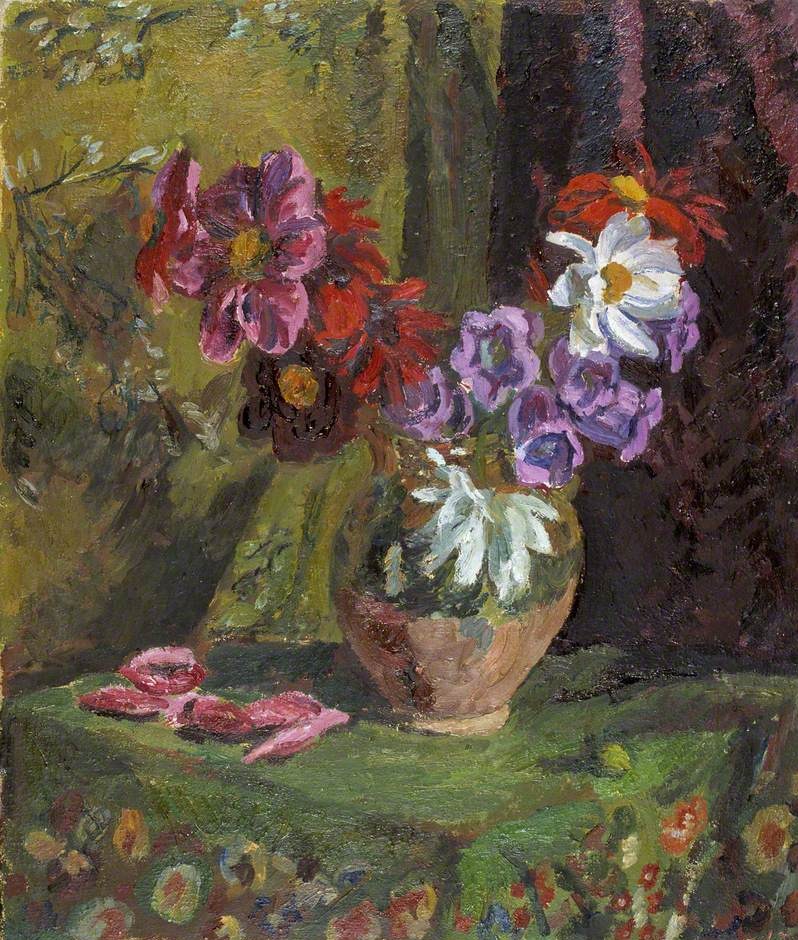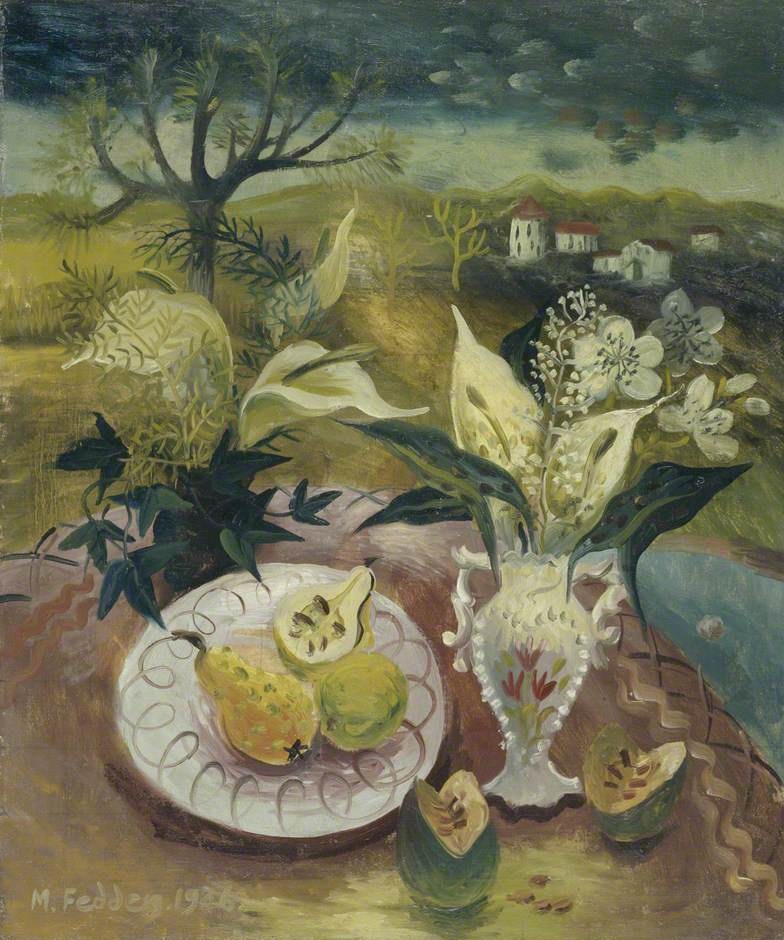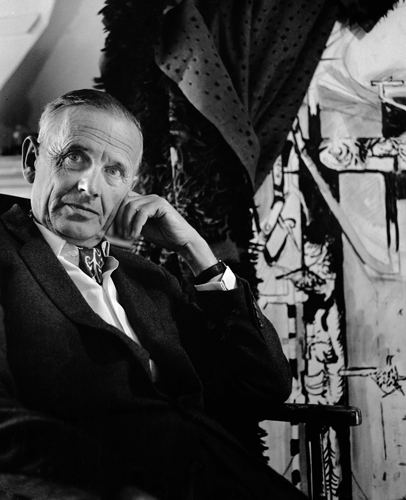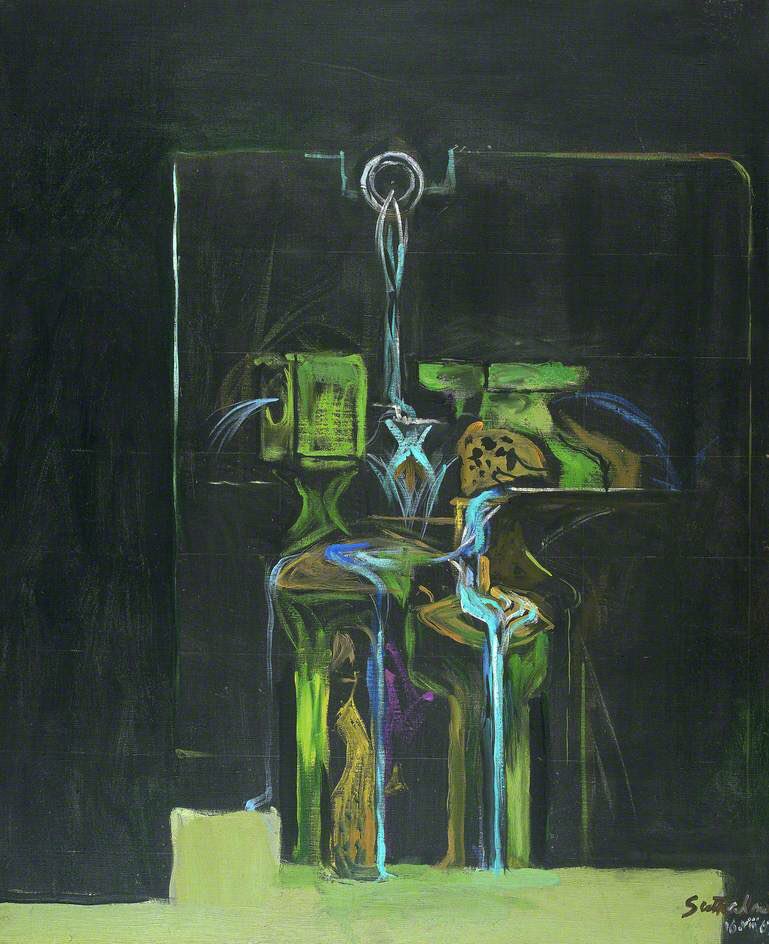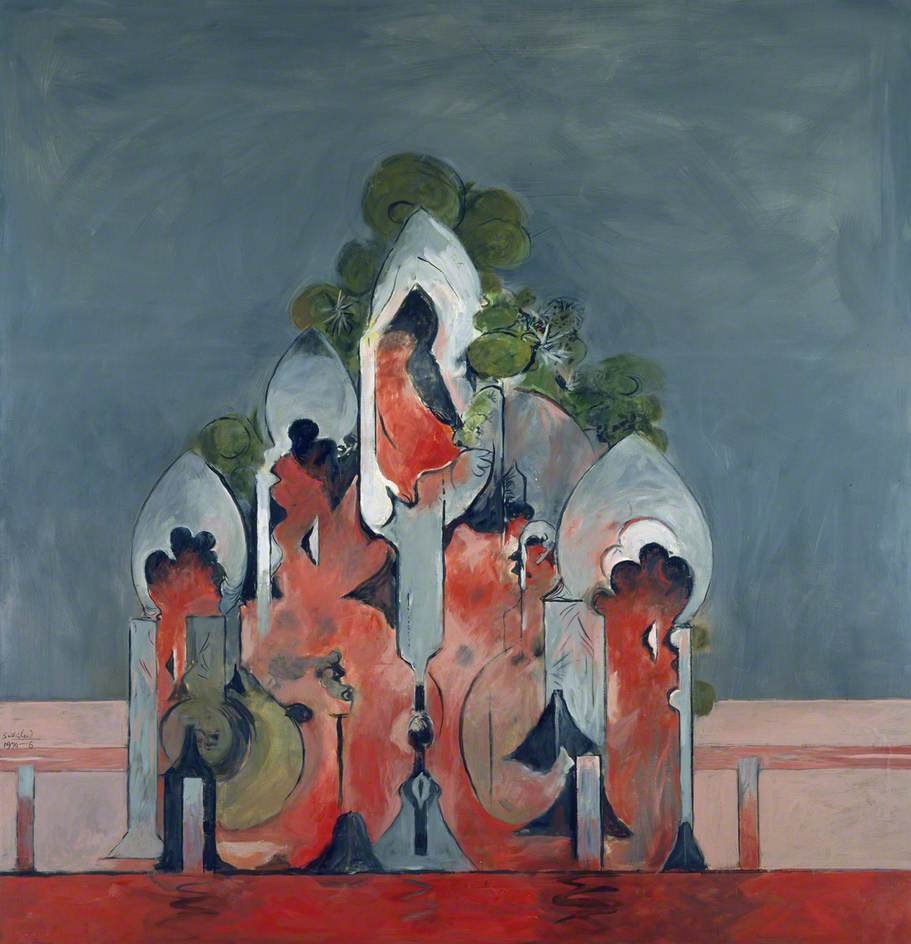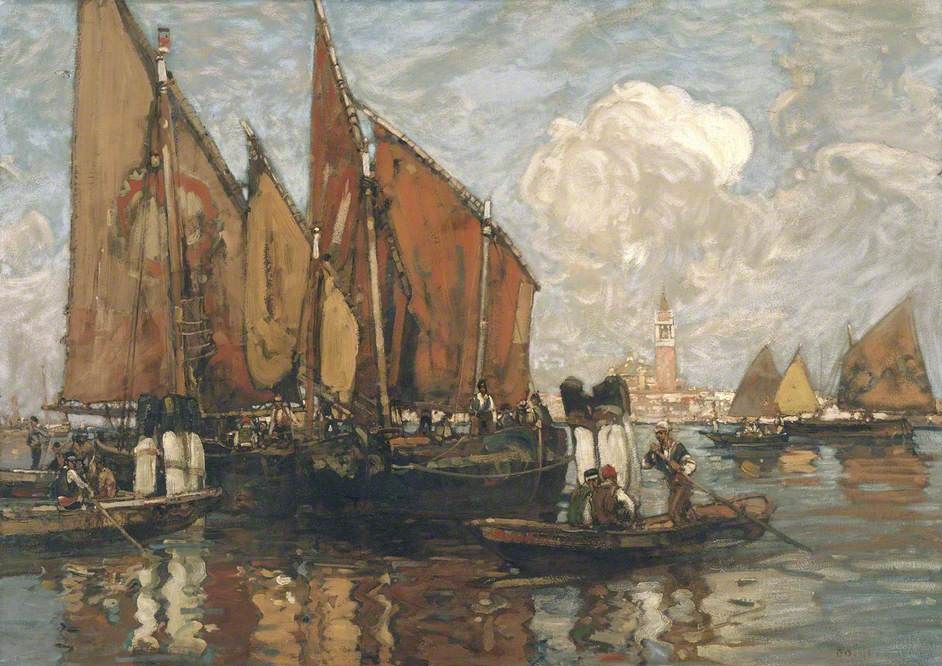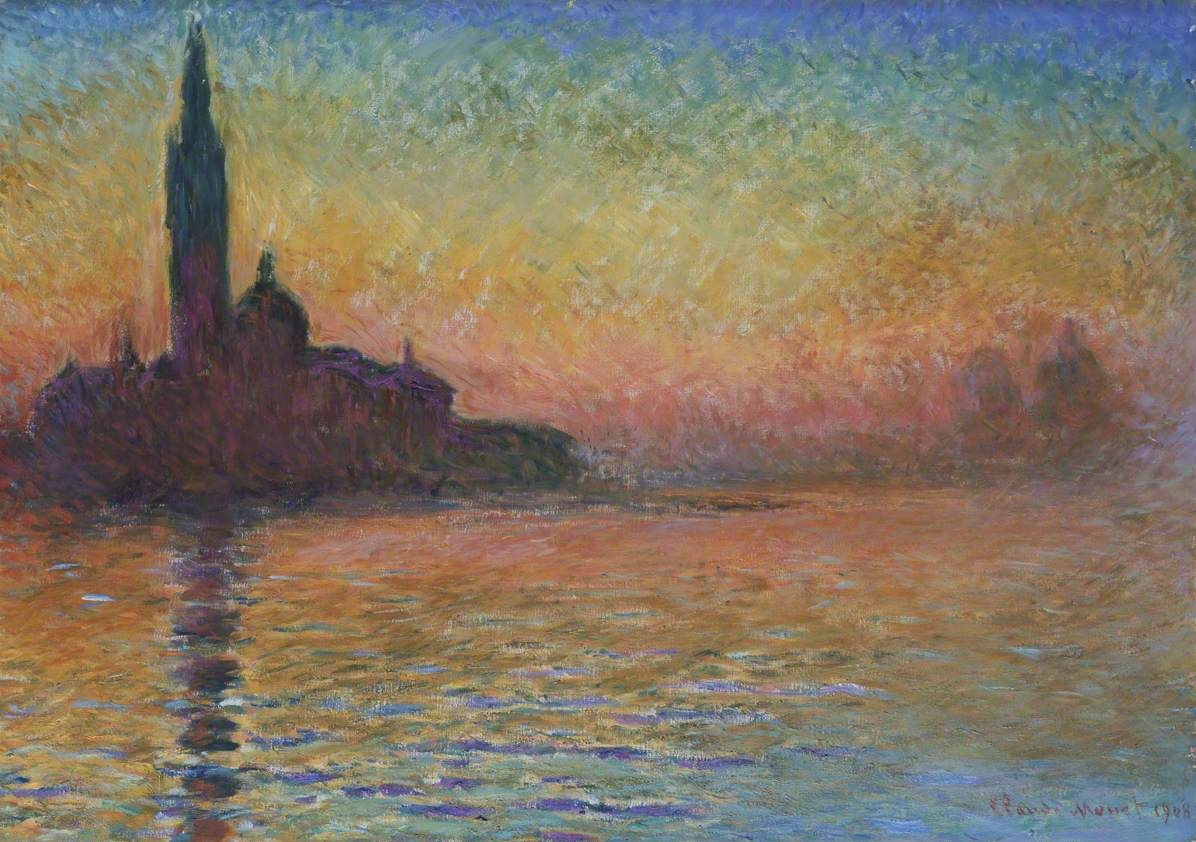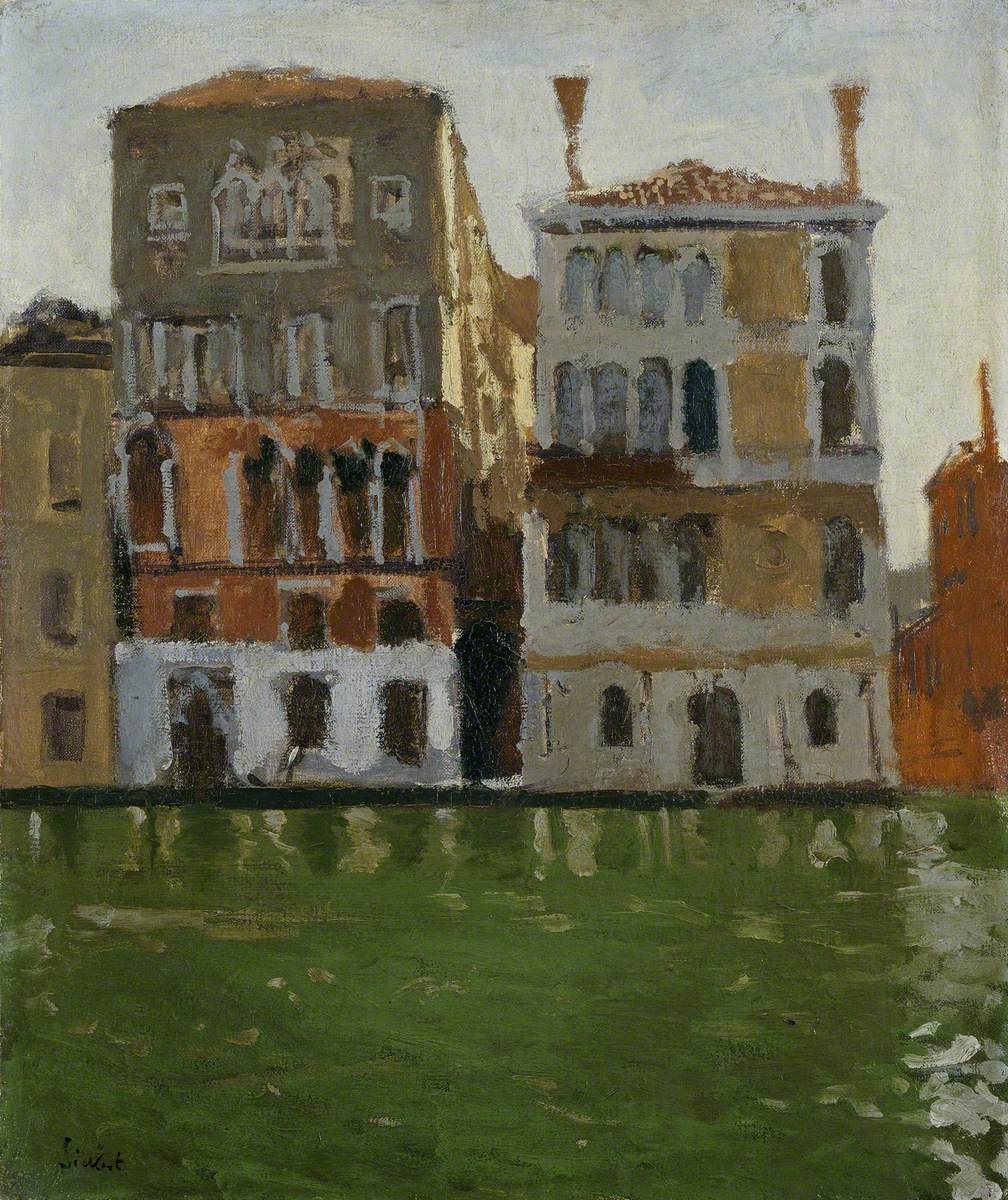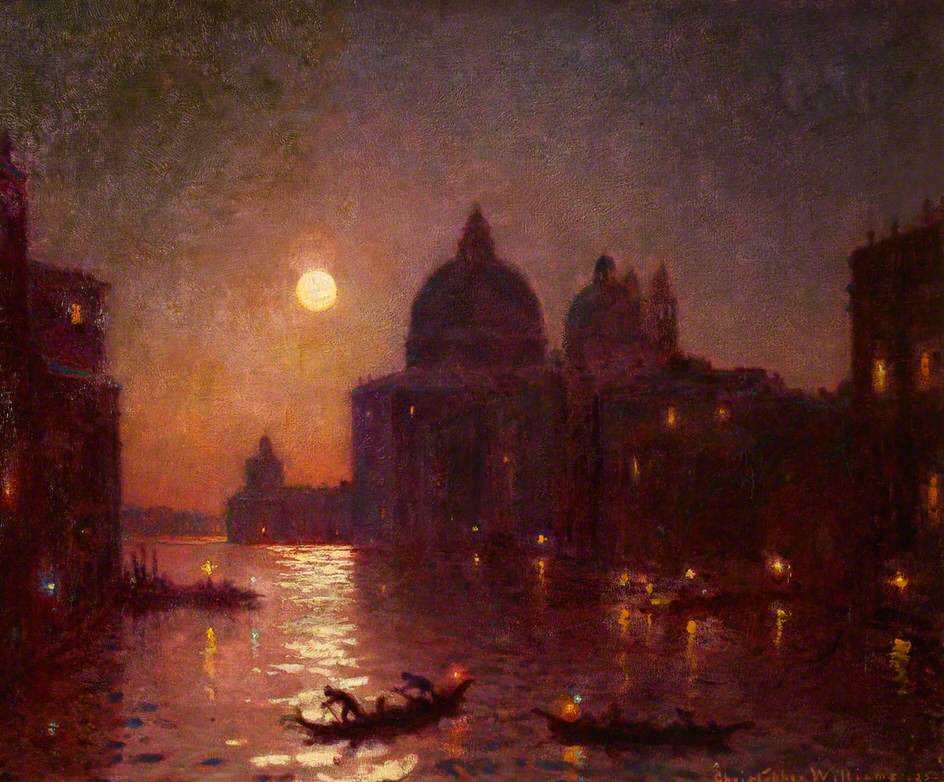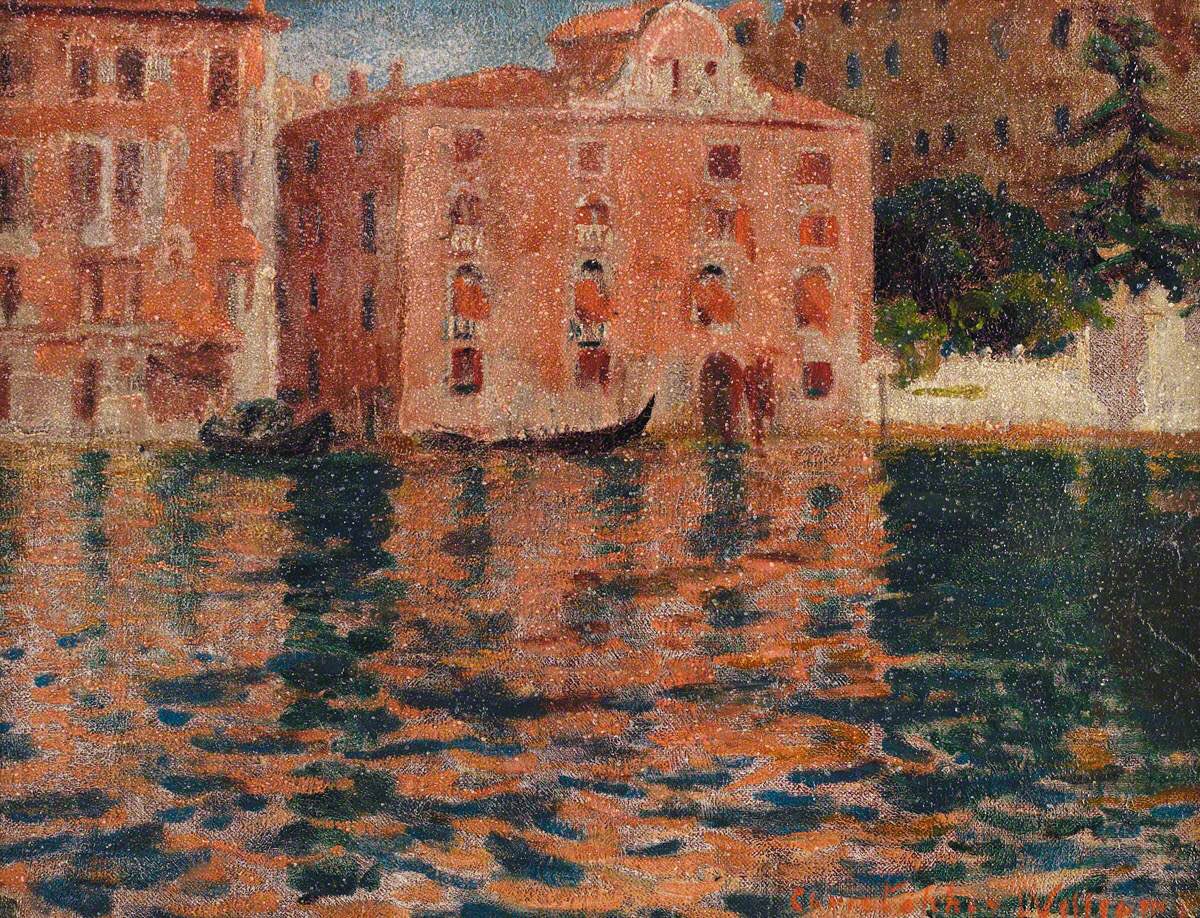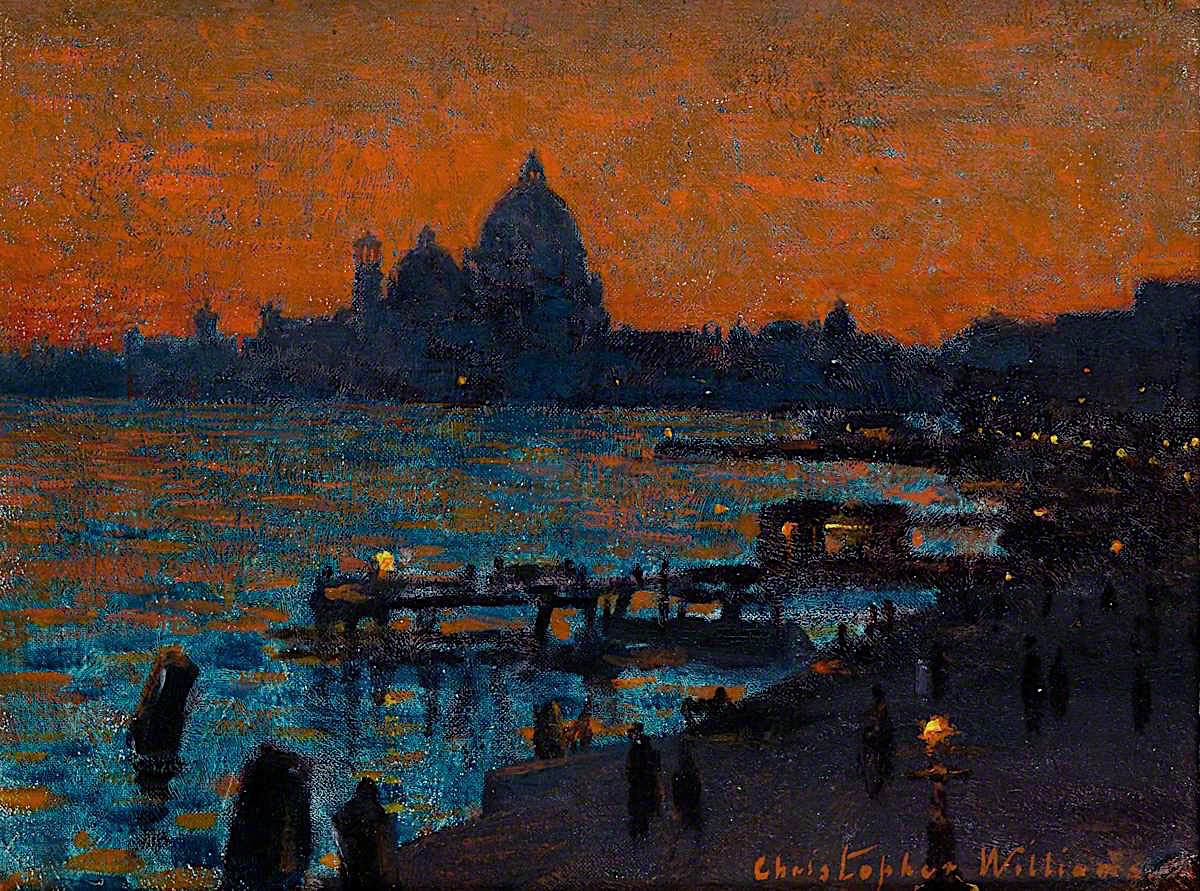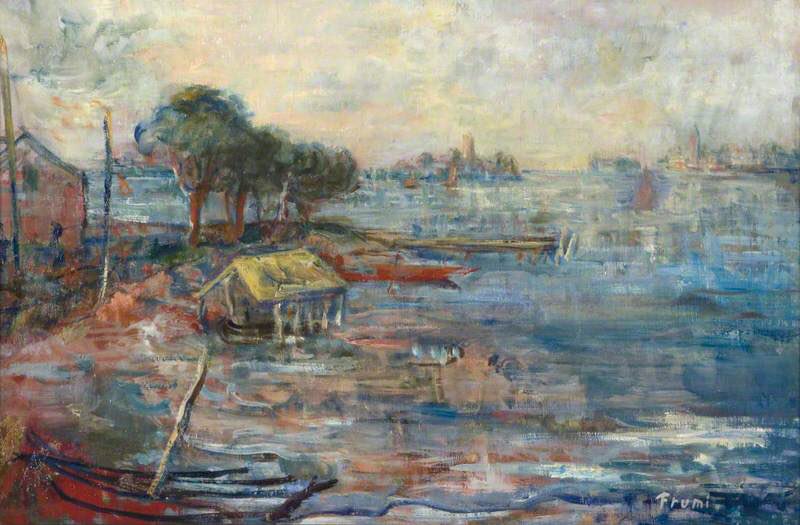"Below the thunders of the upper deep,
Far far beneath in the abysmal sea,
His ancient, dreamless, uninvaded sleep
The Kraken sleepeth..."
Tennyson& #39;s & #39;The Kraken& #39; and Frank Brangwyn& #39;s 1917 lithograph & #39;The Freedom of the Sea& #39;. (Brangwyn& #39;s monstrous cephalopod symbolises Germany!)
Far far beneath in the abysmal sea,
His ancient, dreamless, uninvaded sleep
The Kraken sleepeth..."
Tennyson& #39;s & #39;The Kraken& #39; and Frank Brangwyn& #39;s 1917 lithograph & #39;The Freedom of the Sea& #39;. (Brangwyn& #39;s monstrous cephalopod symbolises Germany!)
& #39;Pilate Washing His Hands& #39; by the Dutch painter, Jan Van Biljert (1597-1671). Van Biljert was one of the "Utrechtse caravaggisten"; artists based in Utrecht and influenced by Caravaggio. ( @Museum_Cardiff @NatMuseumArt)
& #39;The Cornish Coast& #39; (1917) and & #39;Motley& #39; (1912) by Dame Laura Knight. In a career spanning over 70 yrs she drew and painted subjects such as circus performers, travelling communities, dancers of the Bolshoi Ballet and women workers during WW2. ( @Museum_Cardiff @NatMuseumArt)
Another gem from @NatMuseumArt. This is Rembrandt& #39;s 1657 portrait of Catrina Hoogshaet. What I love about this one is that it& #39;s got the coarse, smokey quality of his later paintings, but with exquisite little details like the clasp on her headdress, or the handkerchief & drapery.
“I should say: the house shelters day-dreaming, the house protects the dreamer, the house allows one to dream in peace.” - Gaston Bachelard, ‘The Poetics of Space’.
Below, Graham Crowley’s painting, named after Bachelard’s philosophical essay on architecture. @Museum_Cardiff
Below, Graham Crowley’s painting, named after Bachelard’s philosophical essay on architecture. @Museum_Cardiff
Caitlin Thomas (née Macnamara) and Dylan Thomas, painted in 1930 and 1937 respectively by Tenby-born artist Augustus John. Dylan& #39;s portrait was painted the year he and Caitlin were married, and they would remain together, however turbulently, until his death in 1953.
#HappyMothersDay!
Alice Havers was a Victorian artist who grew up in the Falklands and Uruguay before her family& #39;s return to England. She lived briefly in Paris and exhibited at the Paris Salon and Royal Academy. This is her 1875 painting & #39;They Homeward Wend Their Weary Way& #39;.
Alice Havers was a Victorian artist who grew up in the Falklands and Uruguay before her family& #39;s return to England. She lived briefly in Paris and exhibited at the Paris Salon and Royal Academy. This is her 1875 painting & #39;They Homeward Wend Their Weary Way& #39;.
& #39;Madonna and Child with Pomegranate& #39; (c.1500) by Botticelli and studio. Long thought to have been by a pupil or follower of Sandro Botticelli, it& #39;s now believed that many of the details, such as Mary& #39;s head, were completed by the artist himself. #MothersDay
Morning!
Today, more pieces from @Museum_Cardiff / @NatMuseumArt& #39;s collection, this time with a Pop and Op theme. First up: Peter Blake& #39;s & #39;Kamikaze& #39; (1965), a mixed-media work that incorporates painting, collage and a toy fighter plane.
Today, more pieces from @Museum_Cardiff / @NatMuseumArt& #39;s collection, this time with a Pop and Op theme. First up: Peter Blake& #39;s & #39;Kamikaze& #39; (1965), a mixed-media work that incorporates painting, collage and a toy fighter plane.
Next up: & #39;The Actor& #39; (1964) by David Hockney. The statuesque figure is based on a sculpture of the pharaoh Akhenaten, and is one of several paintings featuring Egypian iconography painted by Hockney after his move to Los Angeles in 1964.
From Pop to Op!
Bridget Riley (b.1931) began her career making eye-bending black and white abstract images but branched out into polychromatic work in the mid-1960s. This 1984 painting, & #39;Kashan& #39;, draws on the colours used in Egyptian tomb paintings.
Bridget Riley (b.1931) began her career making eye-bending black and white abstract images but branched out into polychromatic work in the mid-1960s. This 1984 painting, & #39;Kashan& #39;, draws on the colours used in Egyptian tomb paintings.
& #39;Tedeum& #39; (1960) by RB Kitaj. Kitaj grew up in Ohio, moving to England after a spell in the US Army. He studied alongside David Hockney at the Royal College of Arts, and was a major influence on early British Pop Art.
(As a teen I had a postcard of this Blu Tacked to my wall.)
(As a teen I had a postcard of this Blu Tacked to my wall.)
Today& #39;s theme: The Great Outdoors, starting with & #39;Kinchinjunga from Darjeeling& #39; (1877) by Edward Lear.
Lear described Kinchinjunga as "...so far off, so very god-like & stupendous, & all that great world of dark opal valleys full of misty, hardly to be imagined forms."
Lear described Kinchinjunga as "...so far off, so very god-like & stupendous, & all that great world of dark opal valleys full of misty, hardly to be imagined forms."
Good afternoon! This is & #39;Landscape with St Philip Baptising the Eunuch& #39; (1678) by Claude Lorrain. It& #39;s from the mid-Baroque when landscapes still had to have some sort of narrative, preferably one that was edifying or educational, as well as human figures for scale.
Skipping forward 50 years, and we& #39;re at the cusp of Romanticism. There are human figures in Richard Wilson& #39;s & #39;Landscape with Two Figures& #39; (mid-c.18th) but the Italianate landscape (Wilson lived in Italy from 1750-57) is the star of the show.
The broadcaster Rene Cuttforth once described the Welsh as "Italians in the Rain". Penry Williams (1802-1885) was born in Merthyr Tydfil but settled in Rome aged 25 and remained there for the rest of his life. He painted landscapes and scenes of peasant life. #VivaLitalia  https://abs.twimg.com/emoji/v2/... draggable="false" alt="🇮🇹" title="Flag of Italy" aria-label="Emoji: Flag of Italy">
https://abs.twimg.com/emoji/v2/... draggable="false" alt="🇮🇹" title="Flag of Italy" aria-label="Emoji: Flag of Italy"> https://abs.twimg.com/emoji/v2/... draggable="false" alt="🏴" title="Flag of Wales" aria-label="Emoji: Flag of Wales">
https://abs.twimg.com/emoji/v2/... draggable="false" alt="🏴" title="Flag of Wales" aria-label="Emoji: Flag of Wales">
Radnorshire-born Thomas Jones (1742-1803) travelled to Naples in 1782, where he painted a number of landscapes, such as this view of the Bay of Naples (with Vesuvius visible on the left). His almost minimalist oil studies of the city feel surprisingly modern. #VivaLitalia
Sir Watkin Williams-Wynn, Thomas Apperley and Capt. Edward Hamilton by Pompeo Batoni.
Welsh landowner Sir Watkin (left) travelled to Italy in 1768 for his "Grand Tour". While there he commissioned this portrait from Batoni, then one of the most celebrated portraitists in Italy.
Welsh landowner Sir Watkin (left) travelled to Italy in 1768 for his "Grand Tour". While there he commissioned this portrait from Batoni, then one of the most celebrated portraitists in Italy.
The son of Italian migrants, Ernest Zobole was born in Ystrad, Rhondda in 1927. His vivid, expressionistic images of the Welsh landscape veer close to abstraction, while the titles hint at a wry sense of humour.
This one is called & #39;Some Trees and Some Snow& #39; (1978). #VivaLitalia
This one is called & #39;Some Trees and Some Snow& #39; (1978). #VivaLitalia
Today is #AbstractThursday and here, to start us off, is & #39;Beechwood by Moonlight& #39; (1933) by Merlyn Evans. Is it abstract? Is it figurative? Inspired by woodland walks in Rutherglen, Evans called it an "abstraction of lyrical character", so that& #39;s for us to decide.
The paintings of Clare Woods (b.1972) draw their inspiration from natural forms and the human body, but like Evans& #39;s depiction of beechwood, her subject matter is often distorted to the edge of recognition.
& #39;Hill of Hurdles& #39; (2010)
#AbstractThursday
& #39;Hill of Hurdles& #39; (2010)
#AbstractThursday
Maurice Cockrill& #39;s early work leaned towards photo-realism and Edward Hopper-ish urban scenes. Later pieces, such as this one (& #39;Well You Needn& #39;t& #39;, 2008) overlay expressive dashes and splashes of paint with suggestive and clearly delineated blocks of colour.
"Here, more than ever before, painting approaches music and poetry." - Jean-Louis Vaudoyer
Claude Monet spent much of the last 30yrs of his career producing paintings of the water lilies in his garden at Giverny, including these, made from 1905-08. http://bit.ly/MonetCdf ">https://bit.ly/MonetCdf&...
Claude Monet spent much of the last 30yrs of his career producing paintings of the water lilies in his garden at Giverny, including these, made from 1905-08. http://bit.ly/MonetCdf ">https://bit.ly/MonetCdf&...
& #39;Dahlias and Canterbury Bells& #39; by Vanessa Bell (1879-1961). Inspired by exhibitions of the Post-Impressionists, Bell set out to challenge the Victorian status quo of idealised femininity in art. She was the sister of Virginia Woolf. https://bit.ly/3ap35m9 ">https://bit.ly/3ap35m9&q...
& #39;Fruit and Flowers& #39; (1946) by Mary Fedden.
Bristol-born Fedden studied at the Slade before becoming a set designer for Sadlers Wells and the Arts Theatre in Covent Garden. After serving in WW2 she devoted herself fully to painting. http://bit.ly/MaryFedden ">https://bit.ly/MaryFedde...
Bristol-born Fedden studied at the Slade before becoming a set designer for Sadlers Wells and the Arts Theatre in Covent Garden. After serving in WW2 she devoted herself fully to painting. http://bit.ly/MaryFedden ">https://bit.ly/MaryFedde...
& #39;Floreat& #39; (1933) by Swansea-born Cedric Morris. A lifelong horticulturalist, Morris studied plants while living in Cornwall and later lived with his partner, Arthur Lett-Haines, at Pound Farm in Suffolk. This piece is in the collection of Cyfarthfa Castle. http://bit.ly/CedricMorris ">https://bit.ly/CedricMor...
One thing I discovered while looking for pictures to share is that @Museum_Cardiff has a LOT of Graham Sutherland. Enough, indeed, to host a decent retrospective *HINT HINT*. Sutherland (1903-1980) was a print-maker, portraitist and a painter of sublime, distorted landscapes...
These days he& #39;s perhaps best-known for his 1954 portrait of Winston Churchill, a picture the Churchills hated so much they had it burnt. (Bloody philistines.)
Fortunately, many of his works survive, and I& #39;m going to share some of them on what I& #39;m calling #SutherlandSunday.
Fortunately, many of his works survive, and I& #39;m going to share some of them on what I& #39;m calling #SutherlandSunday.
Having first visited Pembrokeshire in the mid-1930s, Sutherland returned in later life to create a series of vivid, surrealistic paintings based on its wild landscapes. #SutherlandSunday
& #39;Road to Porthclais with Setting Sun& #39; (1975)
http://bit.ly/GSPorthclais ">https://bit.ly/GSPorthcl...
& #39;Road to Porthclais with Setting Sun& #39; (1975)
http://bit.ly/GSPorthclais ">https://bit.ly/GSPorthcl...
A preparatory sketch for Sutherland& #39;s 1957 portrait of cosmetics entrepreneur Helena Rubinstein. The finished portrait is in a private collection, having sold at Sotheby& #39;s in 2011. http://bit.ly/GSRubinstein ">https://bit.ly/GSRubinst... #SutherlandSunday
‘Fountain’ (1963)
#SutherlandSunday
https://museum.wales/art/online/?action=show_item&item=1731">https://museum.wales/art/onlin...
#SutherlandSunday
https://museum.wales/art/online/?action=show_item&item=1731">https://museum.wales/art/onlin...
& #39;Cathedral (Study of Rocks)& #39; - 1977
#SutherlandSunday
http://bit.ly/GSCathedral ">https://bit.ly/GSCathedr...
#SutherlandSunday
http://bit.ly/GSCathedral ">https://bit.ly/GSCathedr...
Today we& #39;re in Venice, starting with the granddaddy of Venetian landscape painters (and art history& #39;s most profound case of nominative determinism), Giovanni Antonio Canal, aka Canaletto. This is his 1730 painting, & #39;Bacino di San Marco, Looking North& #39;. http://bit.ly/CdfCanaletto ">https://bit.ly/CdfCanale...
Let& #39;s skip forward 170 years to the Anglo-Welsh artist, lithographer and all-round-polymath Frank Brangwyn, with whom this thread began. One of a series of paintings he made of Venice, this is & #39;St Mark& #39;s from the Lagoon& #39; (1900). http://bit.ly/CdfBrangwyn ">https://bit.ly/CdfBrangw...
The son of a harbour pilot, Eugène Boudin (1824-1898) was famous for his maritime scenes, and an early practitioner of & #39;en plain air& #39; painting in French landscape art. He painted this 1895 scene of Venice& #39;s & #39;Molo& #39; towards the end of his 52 year career. http://bit.ly/CdfBoudin ">https://bit.ly/CdfBoudin...
More Venice today, and here& #39;s Claude Monet& #39;s almost psychedelic vision of "La Serenissima", & #39;San Giorgio Maggiore by Twilight& #39;. Monet and his wife Alice visited Venice in November 1908 and would take evening gondola trips to enjoy the sunsets. http://bit.ly/MonetCdf ">https://bit.ly/MonetCdf&...
Walter Sickert made a number of visits to Venice around the turn of the century. This 1901 painting depicts the Palazzo Barbaro-Wolkoff and Palazzo Dario but takes its name from the former& #39;s most famous resident, the actress Eleonora Duse. http://bit.ly/CdfSickert ">https://bit.ly/CdfSicker...
A second Venice view from Sickert (painted c.1902-04), this time depicting the Palazzo Carmerlenghi. Built in the late c.15th, it was the seat of the city& #39;s financial magistrates, its ground floor at one time serving as a debtor& #39;s prison. http://bit.ly/CdfSickert2 ">https://bit.ly/CdfSicker...
Born in Maesteg Christopher Williams (1873-1934) trained at the Royal College of Art and Royal Academy in London. Though famous primarily as a portraitist he painted many landscapes, including a series of oil sketches made in Venice.
I’m struggling to find much information about her, but Lotte Frumi was born in Venice in 1899, and seems to have lived there all her life. This mid-c20th painting shows a quieter, more domestic side of the city. No grand palazzi or bridges, the landmarks sit across a hazy lagoon.
Thanks to @IvanTheTerabyte& #39;s superior knowledge and/or Googling skills, we have a bit more info on Lotte Frumi. She was born Charlotte Radnitz in Prague and represented Czechoslovakia at the 1926 Venice Biennale, later settling in Venice with her first husband, Richard Schrötter.
Following her divorce from Schrötter she married Guido Ehrenfreund, and together they Italianised their surname as "Frumi". When her mother was deported to a concentration camp Charlotte left Venice for Tuscany. Many of her paintings were lost in WW2.
After the war she returned to Venice and in the 1960s befriended Ezra Pound. Many more of her works were destroyed in the 1966 Venice floods, which may explain why there are so few available online and why she remains relatively obscure.

 Read on Twitter
Read on Twitter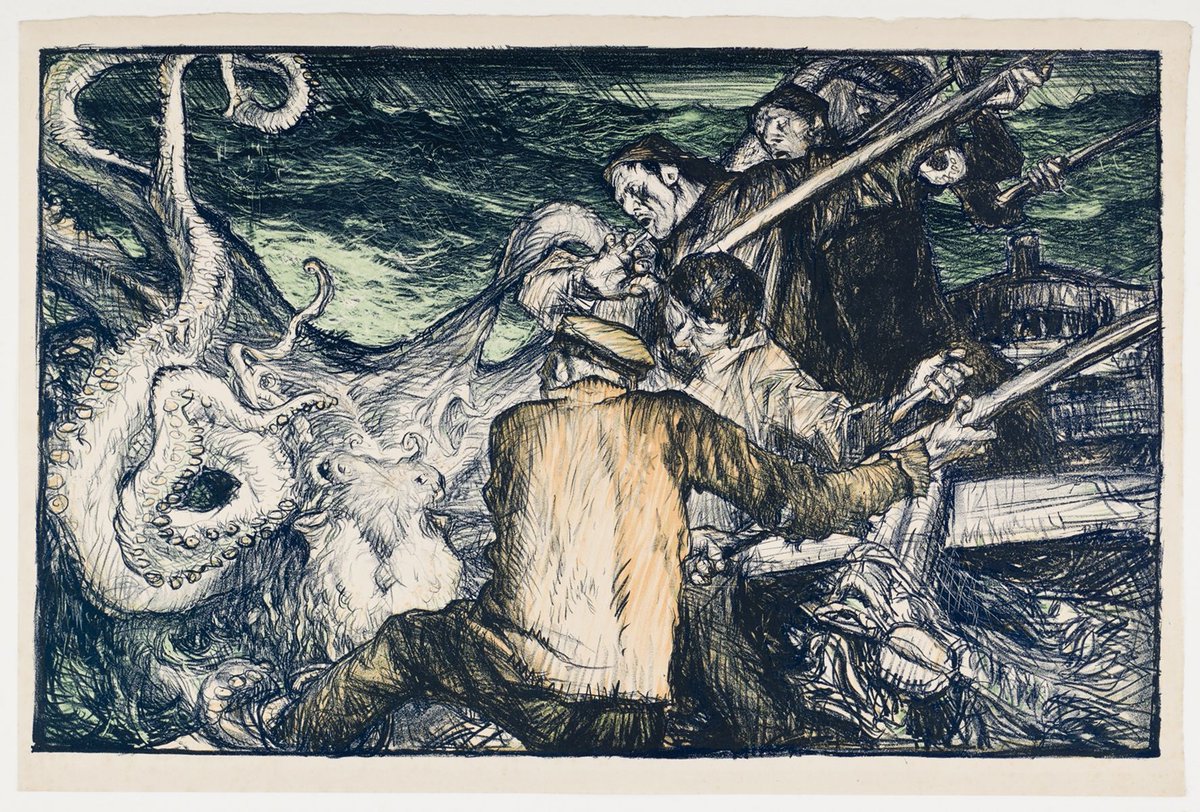
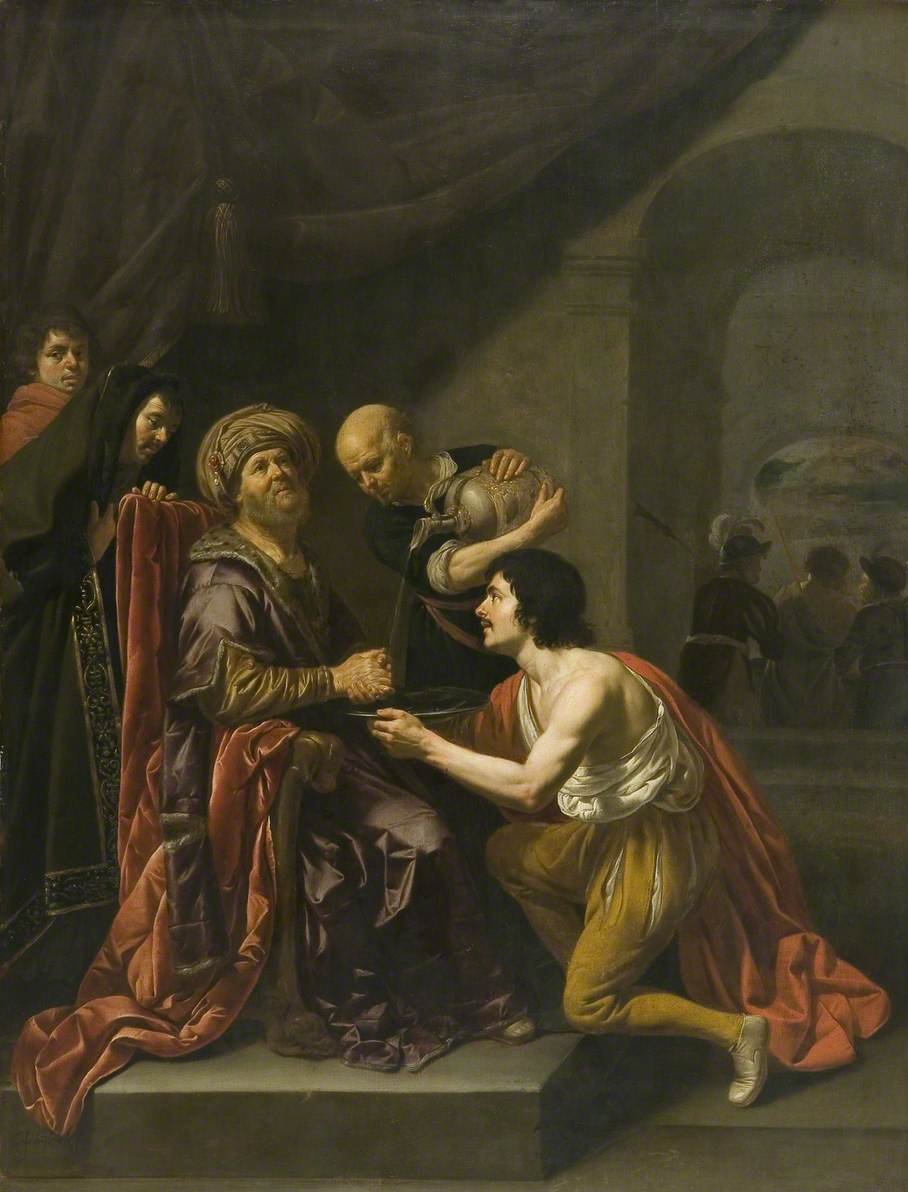
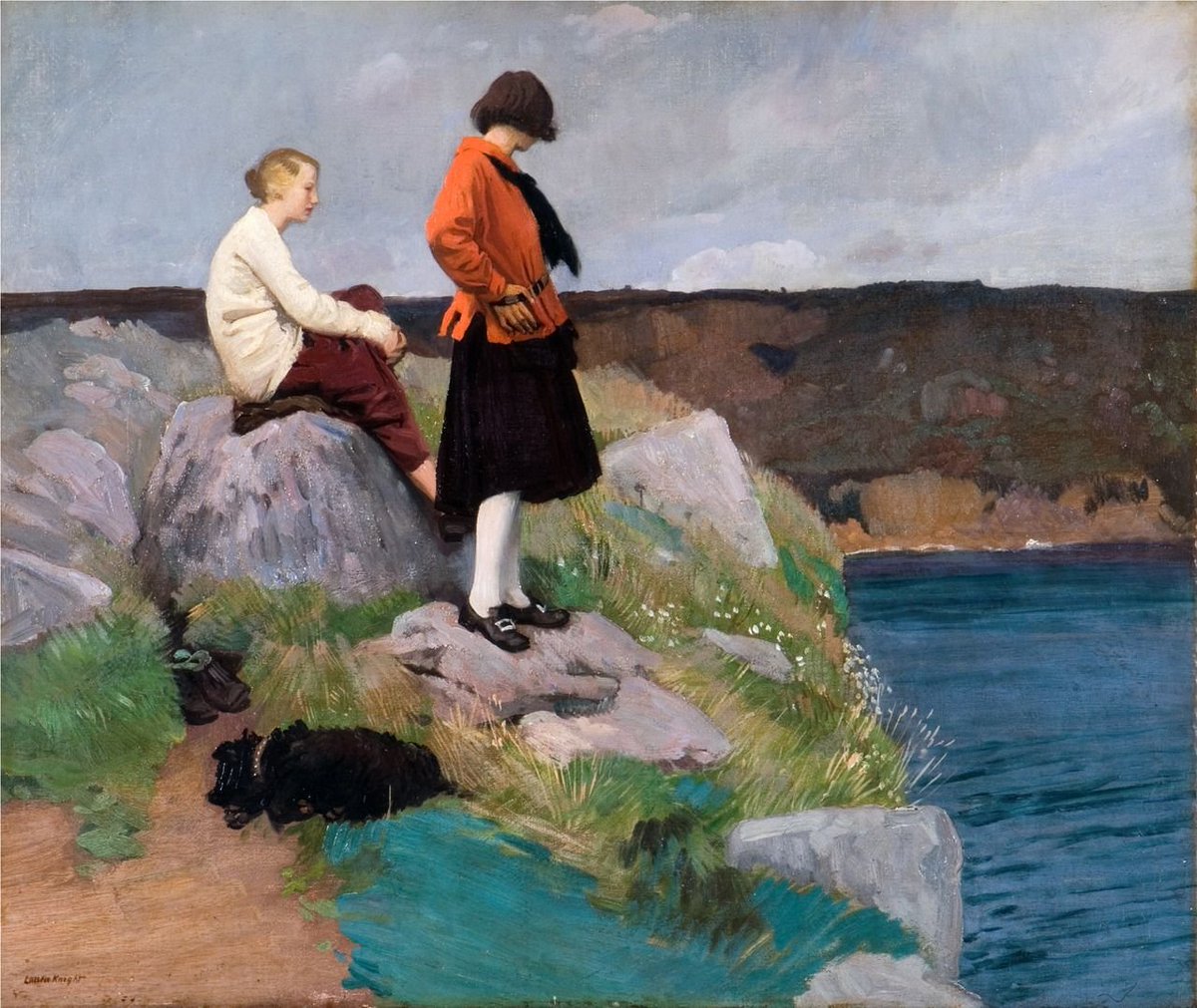
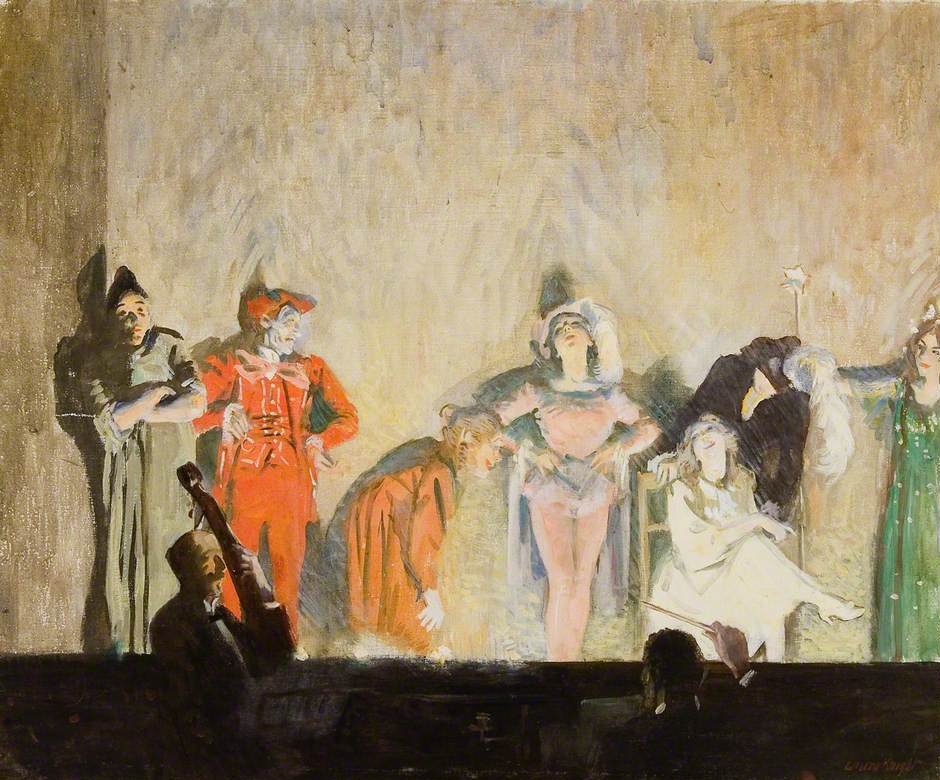
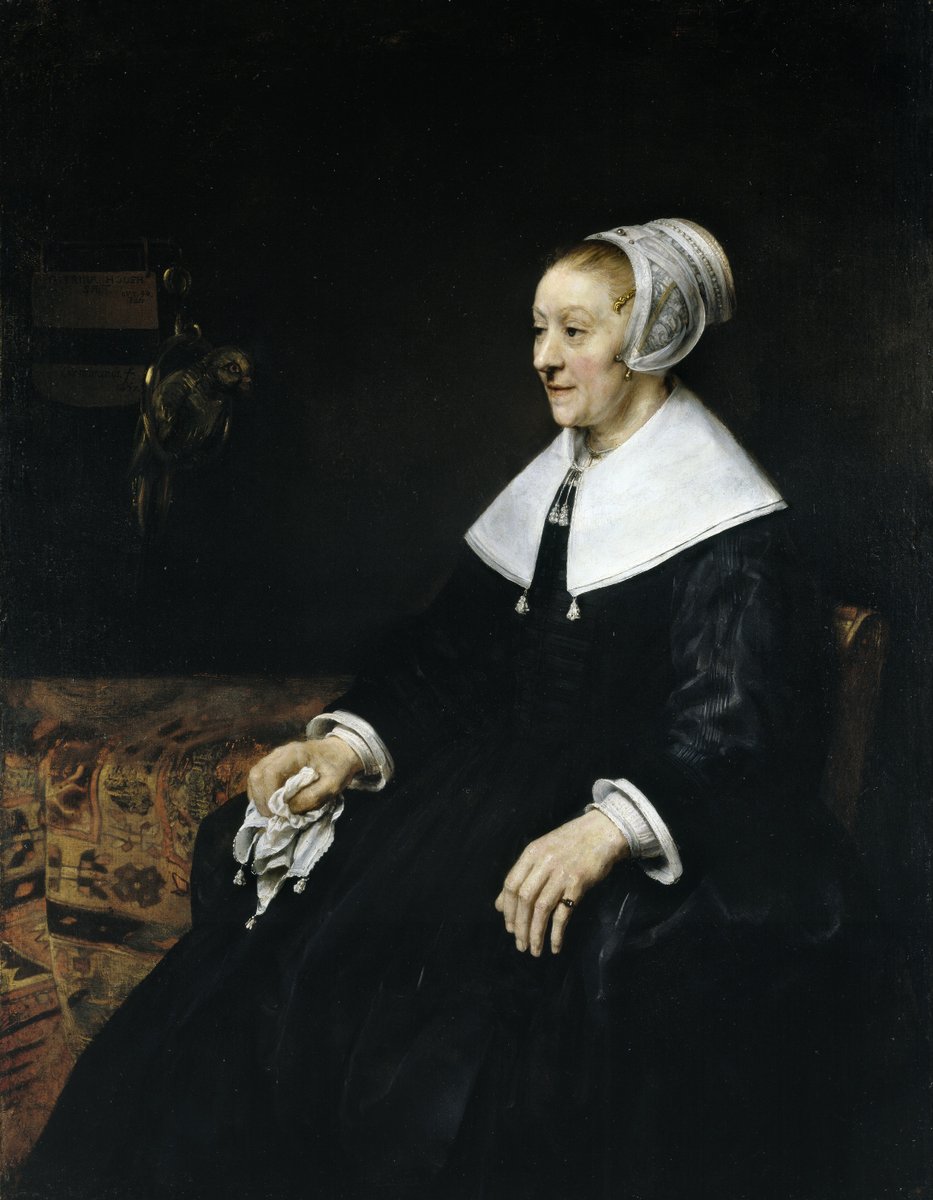
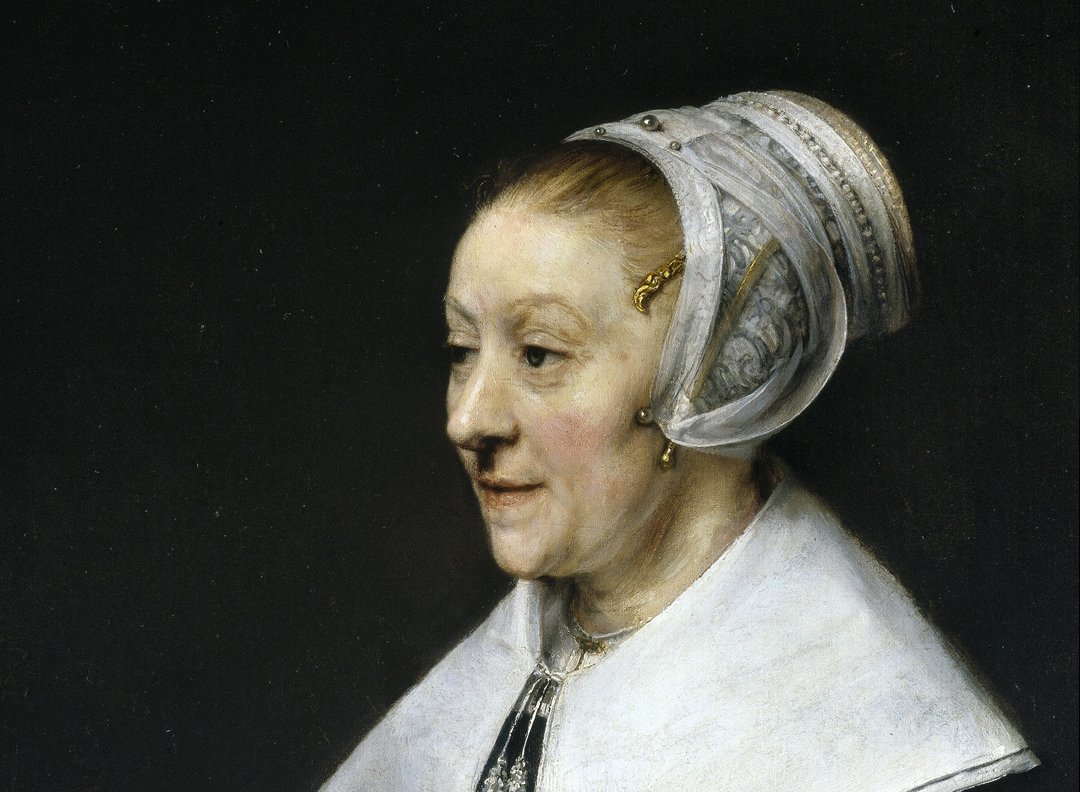


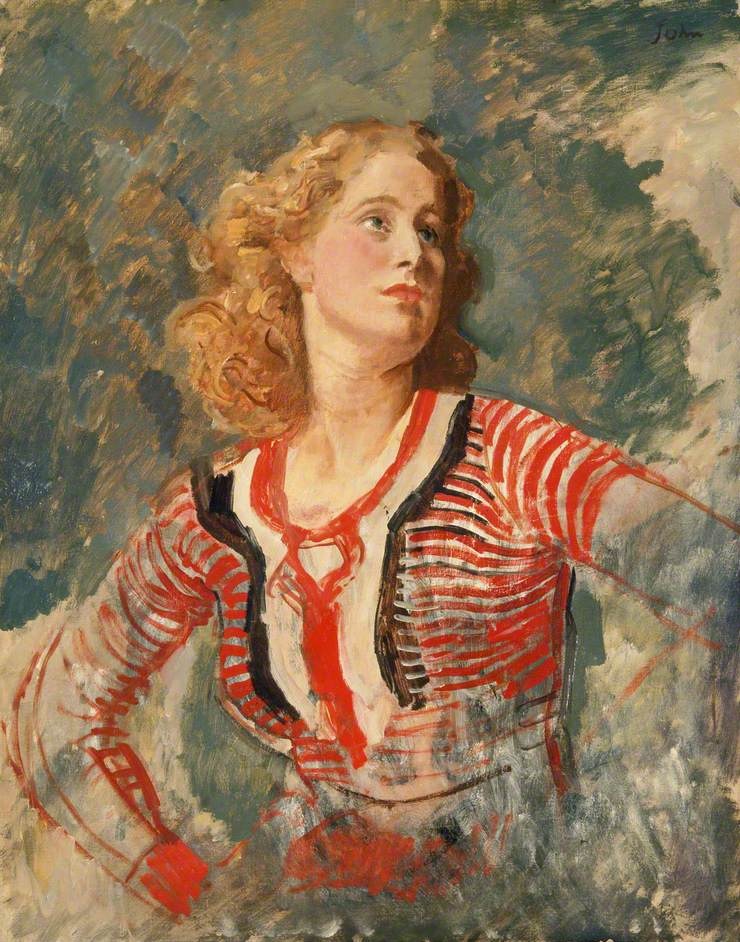
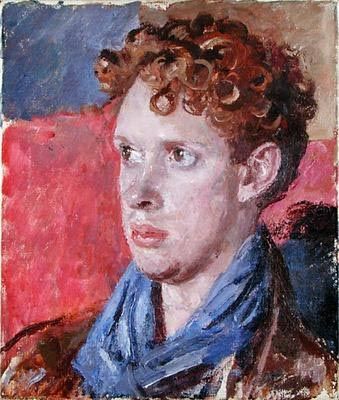
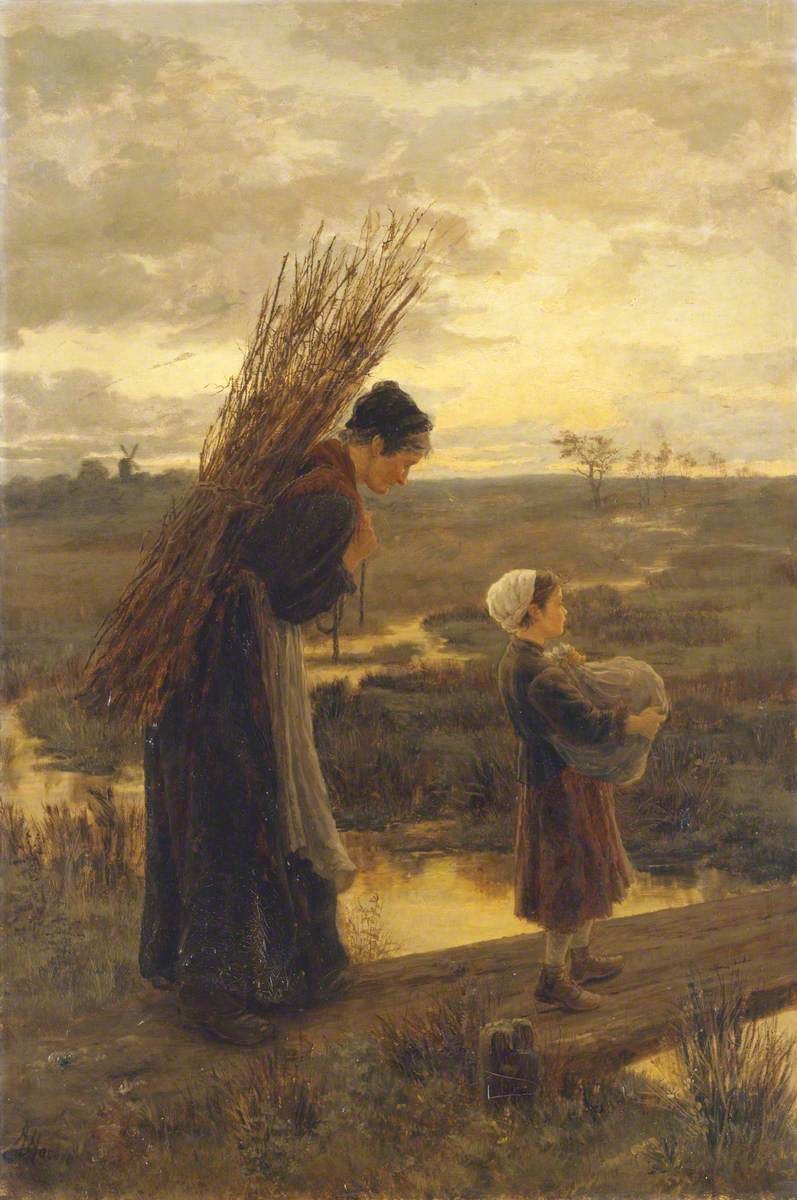
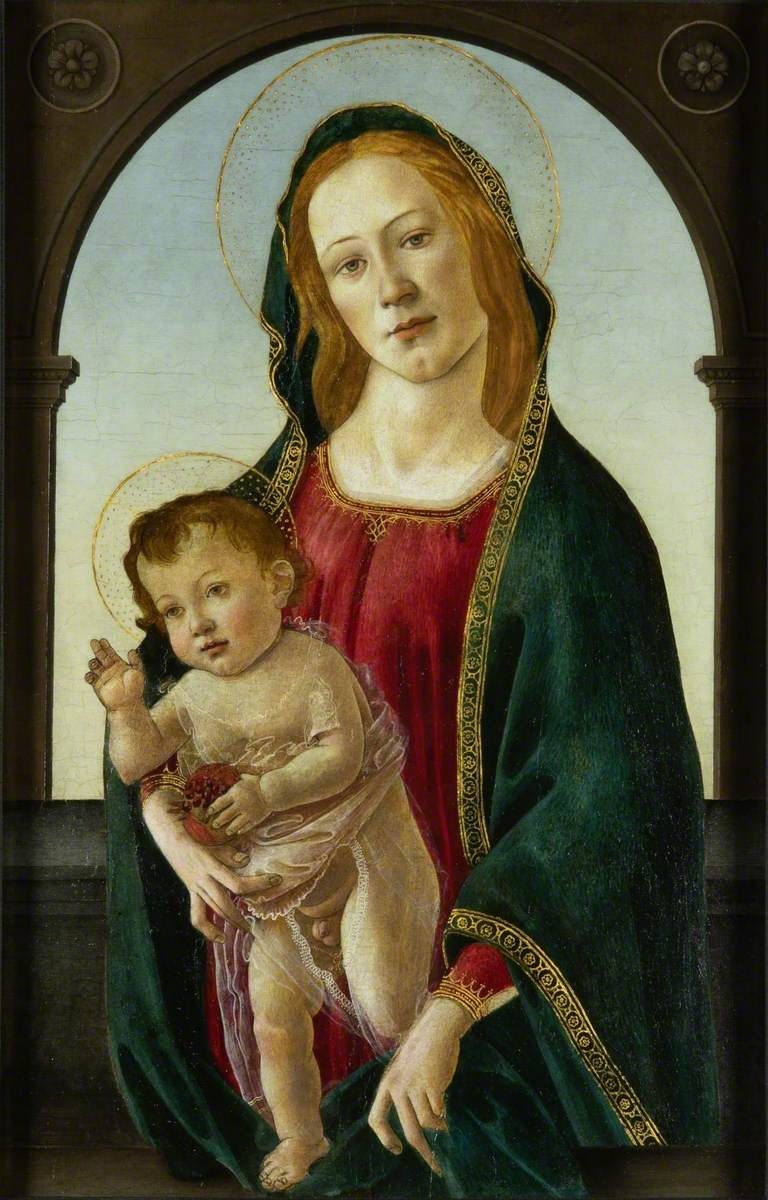



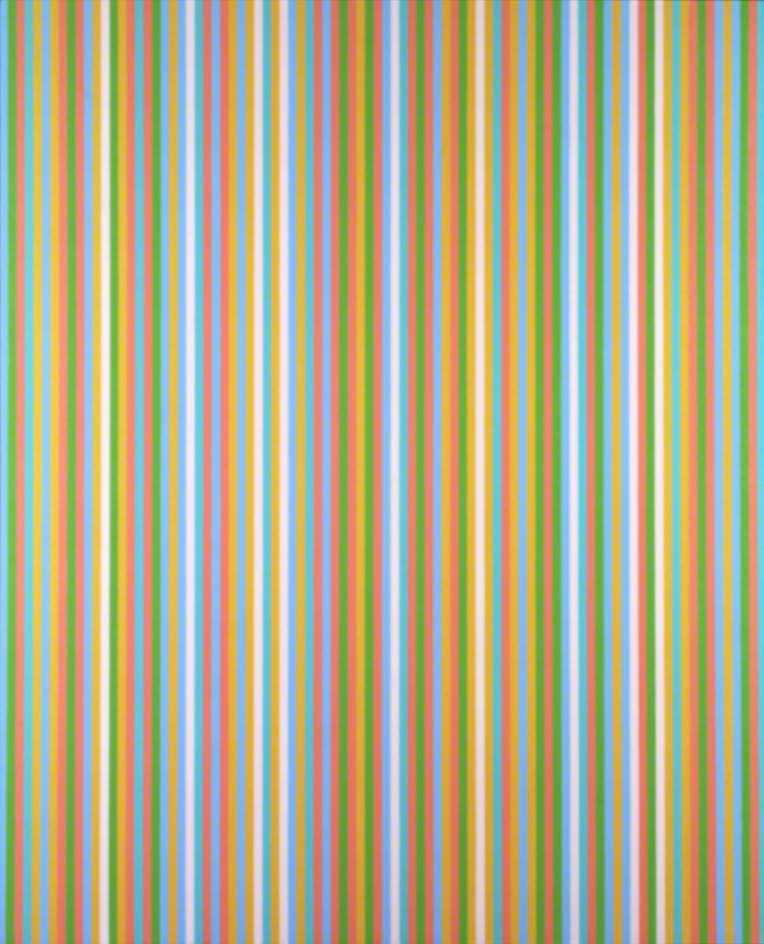
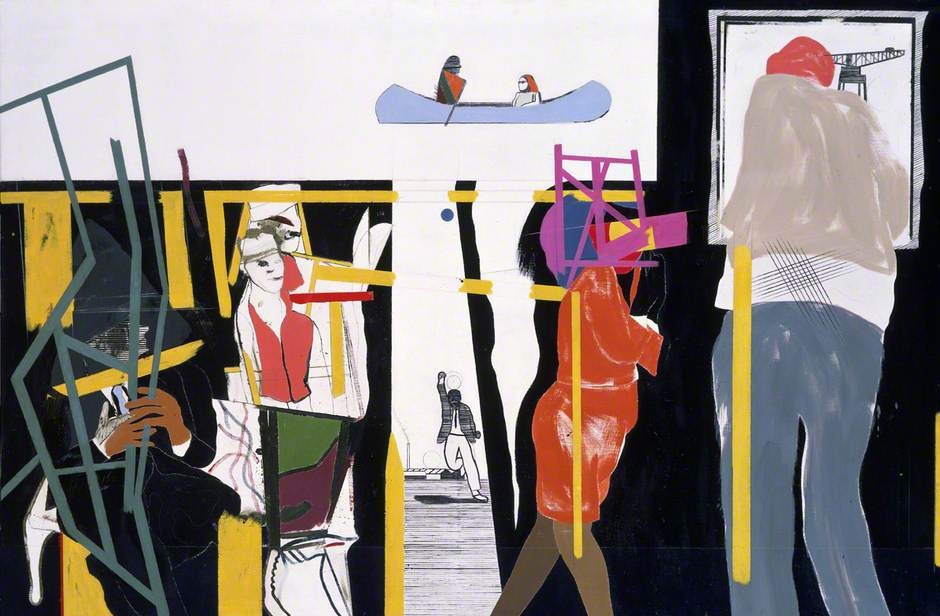
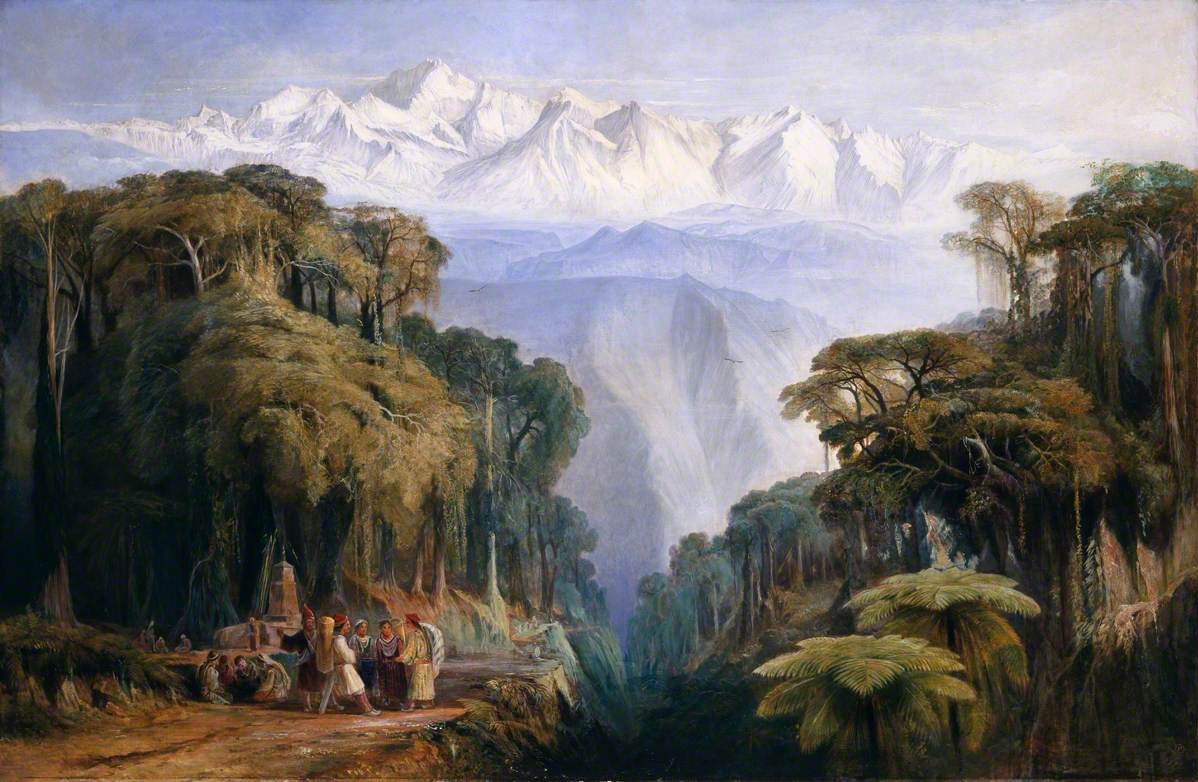
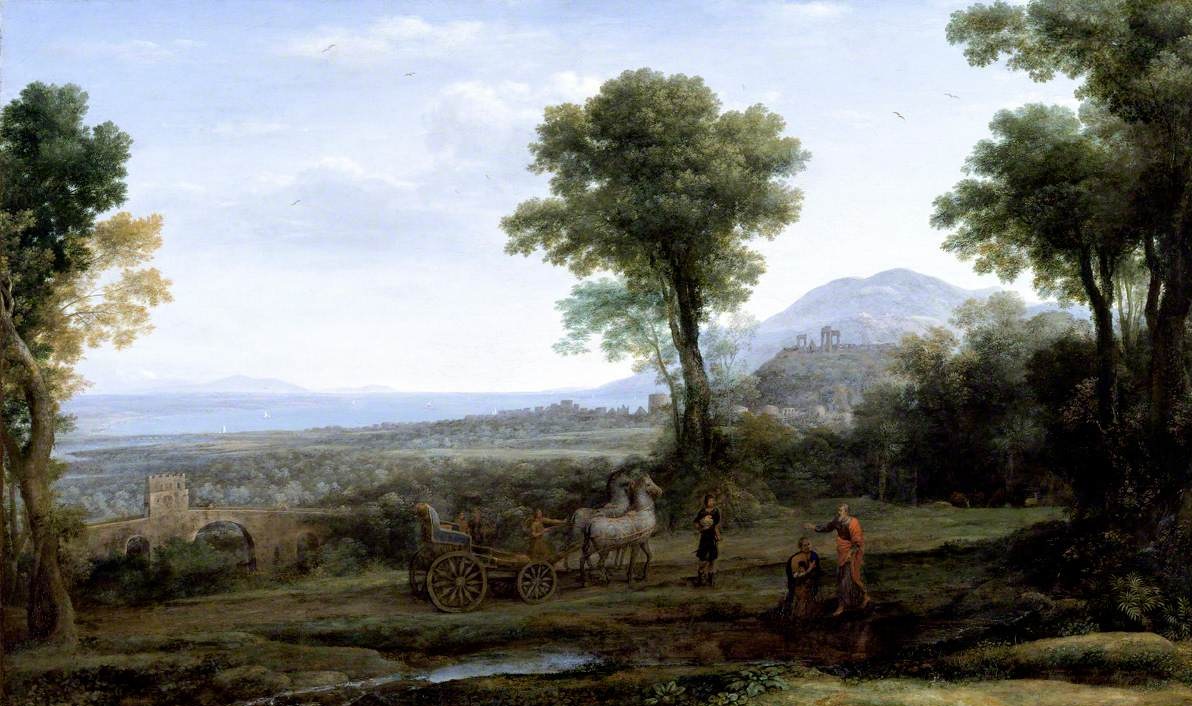
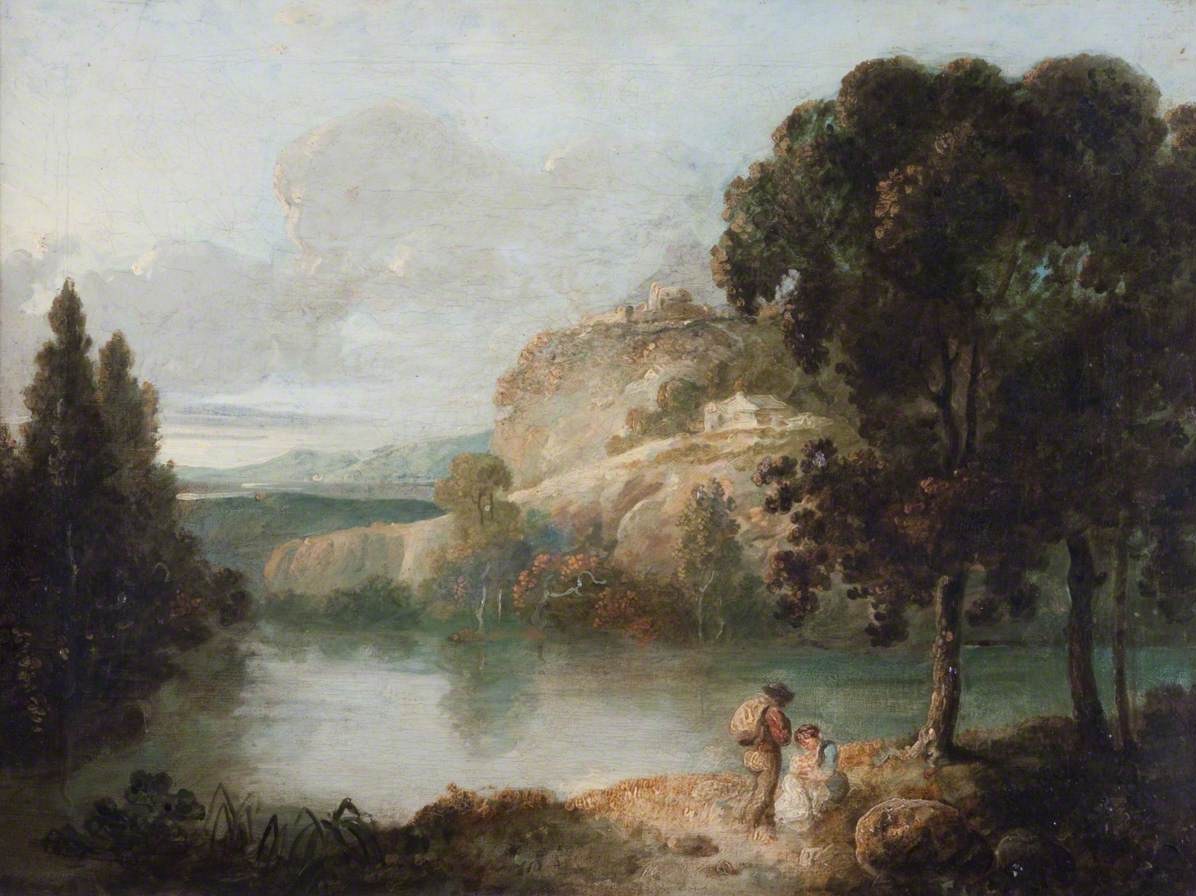
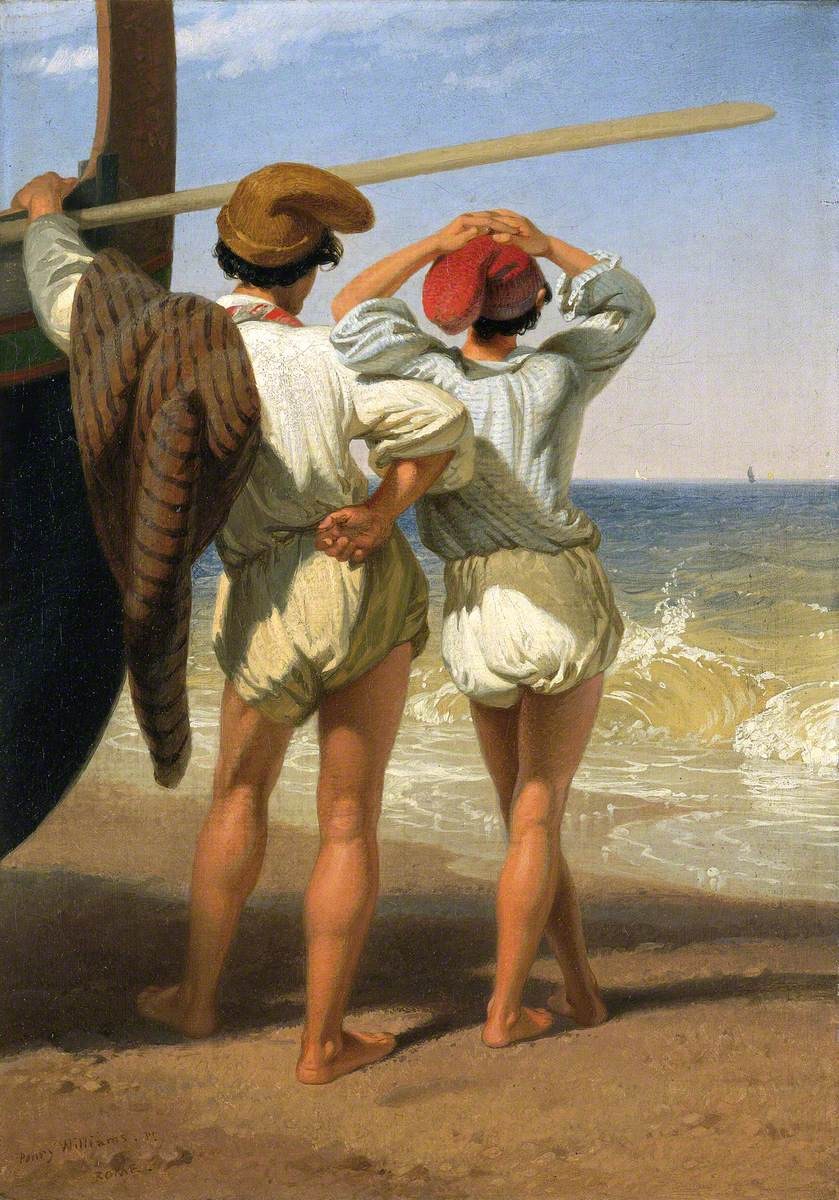 https://abs.twimg.com/emoji/v2/... draggable="false" alt="🏴" title="Flag of Wales" aria-label="Emoji: Flag of Wales">" title="The broadcaster Rene Cuttforth once described the Welsh as "Italians in the Rain". Penry Williams (1802-1885) was born in Merthyr Tydfil but settled in Rome aged 25 and remained there for the rest of his life. He painted landscapes and scenes of peasant life. #VivaLitalia https://abs.twimg.com/emoji/v2/... draggable="false" alt="🇮🇹" title="Flag of Italy" aria-label="Emoji: Flag of Italy">https://abs.twimg.com/emoji/v2/... draggable="false" alt="🏴" title="Flag of Wales" aria-label="Emoji: Flag of Wales">">
https://abs.twimg.com/emoji/v2/... draggable="false" alt="🏴" title="Flag of Wales" aria-label="Emoji: Flag of Wales">" title="The broadcaster Rene Cuttforth once described the Welsh as "Italians in the Rain". Penry Williams (1802-1885) was born in Merthyr Tydfil but settled in Rome aged 25 and remained there for the rest of his life. He painted landscapes and scenes of peasant life. #VivaLitalia https://abs.twimg.com/emoji/v2/... draggable="false" alt="🇮🇹" title="Flag of Italy" aria-label="Emoji: Flag of Italy">https://abs.twimg.com/emoji/v2/... draggable="false" alt="🏴" title="Flag of Wales" aria-label="Emoji: Flag of Wales">">
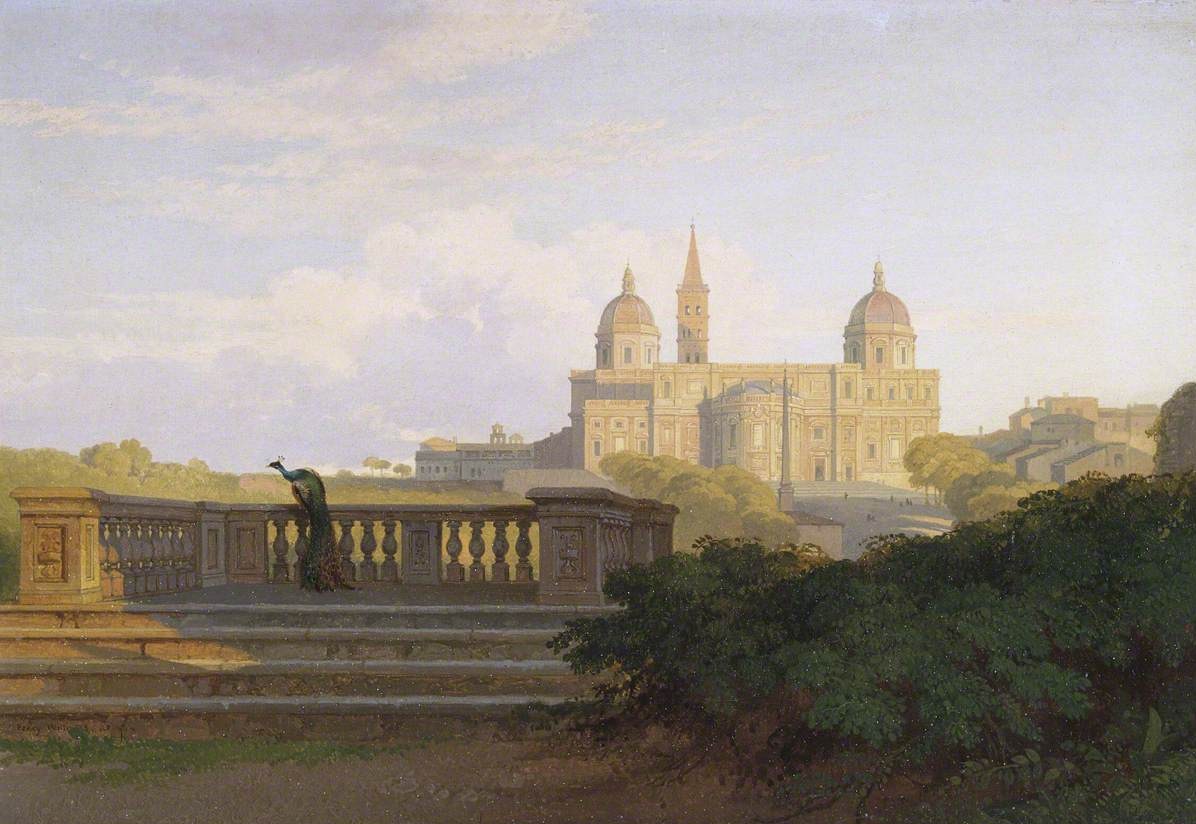 https://abs.twimg.com/emoji/v2/... draggable="false" alt="🏴" title="Flag of Wales" aria-label="Emoji: Flag of Wales">" title="The broadcaster Rene Cuttforth once described the Welsh as "Italians in the Rain". Penry Williams (1802-1885) was born in Merthyr Tydfil but settled in Rome aged 25 and remained there for the rest of his life. He painted landscapes and scenes of peasant life. #VivaLitalia https://abs.twimg.com/emoji/v2/... draggable="false" alt="🇮🇹" title="Flag of Italy" aria-label="Emoji: Flag of Italy">https://abs.twimg.com/emoji/v2/... draggable="false" alt="🏴" title="Flag of Wales" aria-label="Emoji: Flag of Wales">">
https://abs.twimg.com/emoji/v2/... draggable="false" alt="🏴" title="Flag of Wales" aria-label="Emoji: Flag of Wales">" title="The broadcaster Rene Cuttforth once described the Welsh as "Italians in the Rain". Penry Williams (1802-1885) was born in Merthyr Tydfil but settled in Rome aged 25 and remained there for the rest of his life. He painted landscapes and scenes of peasant life. #VivaLitalia https://abs.twimg.com/emoji/v2/... draggable="false" alt="🇮🇹" title="Flag of Italy" aria-label="Emoji: Flag of Italy">https://abs.twimg.com/emoji/v2/... draggable="false" alt="🏴" title="Flag of Wales" aria-label="Emoji: Flag of Wales">">
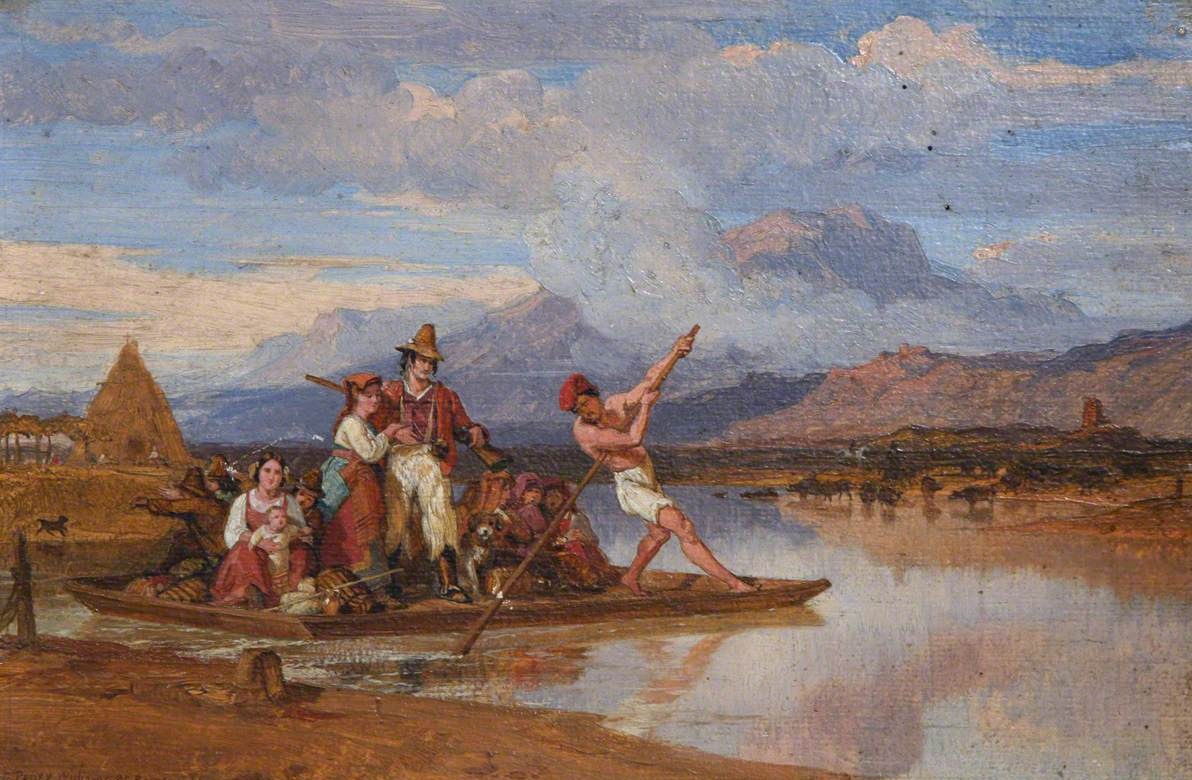 https://abs.twimg.com/emoji/v2/... draggable="false" alt="🏴" title="Flag of Wales" aria-label="Emoji: Flag of Wales">" title="The broadcaster Rene Cuttforth once described the Welsh as "Italians in the Rain". Penry Williams (1802-1885) was born in Merthyr Tydfil but settled in Rome aged 25 and remained there for the rest of his life. He painted landscapes and scenes of peasant life. #VivaLitalia https://abs.twimg.com/emoji/v2/... draggable="false" alt="🇮🇹" title="Flag of Italy" aria-label="Emoji: Flag of Italy">https://abs.twimg.com/emoji/v2/... draggable="false" alt="🏴" title="Flag of Wales" aria-label="Emoji: Flag of Wales">">
https://abs.twimg.com/emoji/v2/... draggable="false" alt="🏴" title="Flag of Wales" aria-label="Emoji: Flag of Wales">" title="The broadcaster Rene Cuttforth once described the Welsh as "Italians in the Rain". Penry Williams (1802-1885) was born in Merthyr Tydfil but settled in Rome aged 25 and remained there for the rest of his life. He painted landscapes and scenes of peasant life. #VivaLitalia https://abs.twimg.com/emoji/v2/... draggable="false" alt="🇮🇹" title="Flag of Italy" aria-label="Emoji: Flag of Italy">https://abs.twimg.com/emoji/v2/... draggable="false" alt="🏴" title="Flag of Wales" aria-label="Emoji: Flag of Wales">">
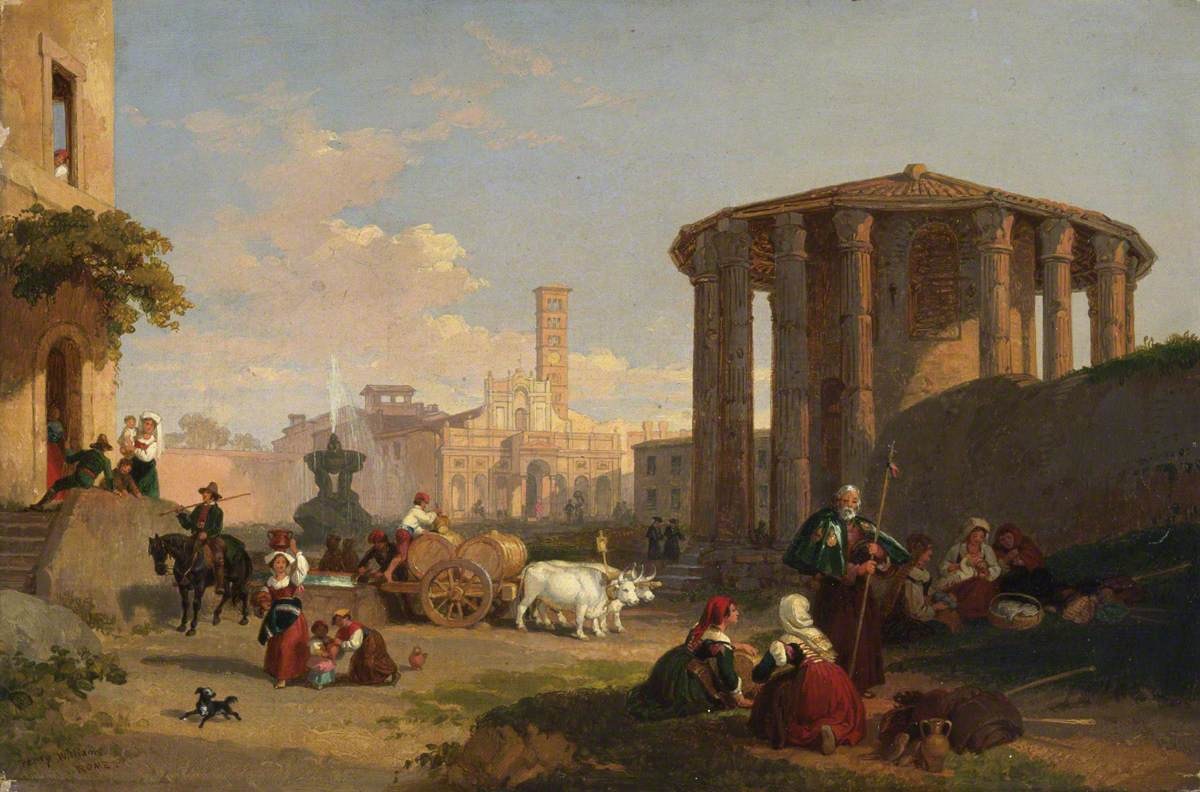 https://abs.twimg.com/emoji/v2/... draggable="false" alt="🏴" title="Flag of Wales" aria-label="Emoji: Flag of Wales">" title="The broadcaster Rene Cuttforth once described the Welsh as "Italians in the Rain". Penry Williams (1802-1885) was born in Merthyr Tydfil but settled in Rome aged 25 and remained there for the rest of his life. He painted landscapes and scenes of peasant life. #VivaLitalia https://abs.twimg.com/emoji/v2/... draggable="false" alt="🇮🇹" title="Flag of Italy" aria-label="Emoji: Flag of Italy">https://abs.twimg.com/emoji/v2/... draggable="false" alt="🏴" title="Flag of Wales" aria-label="Emoji: Flag of Wales">">
https://abs.twimg.com/emoji/v2/... draggable="false" alt="🏴" title="Flag of Wales" aria-label="Emoji: Flag of Wales">" title="The broadcaster Rene Cuttforth once described the Welsh as "Italians in the Rain". Penry Williams (1802-1885) was born in Merthyr Tydfil but settled in Rome aged 25 and remained there for the rest of his life. He painted landscapes and scenes of peasant life. #VivaLitalia https://abs.twimg.com/emoji/v2/... draggable="false" alt="🇮🇹" title="Flag of Italy" aria-label="Emoji: Flag of Italy">https://abs.twimg.com/emoji/v2/... draggable="false" alt="🏴" title="Flag of Wales" aria-label="Emoji: Flag of Wales">">
